Complete Solutions to Example of chapter CURRENT ELECTRICITY of Class 12 book with complete answers and questions
| Class 12 | PHYSICS |
| Chapter | CURRENT ELECTRICITY |
| CP SINGH | Example |
| Number Of Questions | 68 |
| Academic Year | 2023-24 |
In a discharge tube, `6 xx 10^18` electrons move to the left and `4 xx 10^18` protons move to the right past a cross-section in every second. Find the magnitude and the direction of current.
03:49View SolutionAn electron moves in a circle of radius `pi` can with uniform speed `5 xx 10^6 m//sec`. Find the electric current at point on the circle. (Take `pi^2 = 10`).
02:36View Solution(a) The amount of charge passed in time `t` through a cross-section of wire is
`q = alpha t - beta t^2`
where `alpha` and `beta` are constant.
(i) Find current in terms of time `t`.
(ii) Sketch `i` versus `t` graph.
(b) The current through a wire depends on time as
`i = 4 + 3t + 2t^2`
Find the charge crossed through a section of wire in `6 sec`.04:19View SolutionAn electron beam has an aperture `2 mm^2`. A total of `5 xx 10^18` electrons go through any perpendicular cross-section per second. Find
(a) the current and
(b) the current density in the beam.01:57View SolutionThe current-voltage graph for a given speciment at two different temperatures `T_1` and `T_2` are shown in the figure. Is the specimen ohmic ?
(b) At which temperature resistance is greater ?
( c) Which temperature is higher ?
 .03:31View Solution
.03:31View SolutionA potential difference is applied between the ends of a conductor of uniform radius `2 mm`. It results in an electric field of strength `250 V//m` along the length of conductor. Find the resistivity of the material if current in the conductor is `2 pi A`.
02:48View SolutionA potential difference `50 V` is applied between the ends of conductor of length `100 m` and resistance `0.5 Omega`. The conductor has a uniform cross-section. Find the total linear momentum of free electrons.
03:59View SolutionA current of `5` ampere is passing through a metallic wire of cross-section area `4 xx 10^-6 m^2`. If the density of the charge carries in the wire is `5 xx 10^26 m^3`, find the drift speed of the electrons.
(b) In copper there are `10^22` free electrons per `c.c.`, all of which contribute to a current of `1` ampere in a wire of copper of `0.01 cm^2` cross-sectional area :
(i) What is the average speed of electrons in the copper ?
(ii) What is the electric field in the wire ?
Given specific resistance of copper `1.6 xx 10^-8 ohm-meter`.
( c) The area of cross-section, length and density of a piece of a metal of atomic weight `60` are `10^-6 m^2, 1.0 m` and `5 xx 10^3 kg//m^3` respectively. Find the number of free electrons per unit volume if every atom contributes one free electron. Also, find the drift velocity of electrons in the metal when a current of `16 A` passes through it. (Given : Avogadro number `6 xx 10^26//kg-"mole"`).10:24View Solution`1` meter long metallic wire is broken into two unequal parts `P and Q. P` part of the wire in uniformly extended into another wire `R`. Length of `R` is twice the length of `P` and the resistance of `R` is equal to that of `Q`. Find the ratio of the resistance `P` and `R` and also the ratio of the length `P and Q`
04:50View SolutionA metal ball of radius `a` is surrounded by a thin concentric metal shell of radius `b`. The space between these electrodes is filled up with a poorly conducting homogenous medium of resistivity `rho`. Find the resistance of the interelectrode gap. Analyse the obtained solution at `b rarr oo`.
03:54View SolutionThe resistance of rwo wires `A` and `B` at `20^@C` are `3 Omega` and `4 Omega` respectively. At what temperature will the resistance be equal ? `alpha_(A) = 6 xx 10^-3 K^(-1), alpha_(B) = 2 xx 10^-3 K^-1`. Neglect any thermal expansion.
03:48View Solution(a) At what temperature would the resistance of a copper conductor be double of its value of `0^(@)C`? (b) Does this same temperature hold for all copper conductors, regardless of shape and size? `[alpha_(c) = 4.0xx10^(-3).^(@)C^(-1)]`
03:08View SolutionA carbon and an aluminimum wire are connected in series.If the combination has resistance of `27` ohm at `0^(@)C`,what is the resistance of each wire at `0^(@)C` so that the resistance of the combination does not change with temperature ?
`[alpha_(C ) = -0.5 xx 10^(-3)(.^@C)^(-1)` and `alpha_(A) = 4 xx 10^(-3)(.^@C)^-1]`.05:09View SolutionA potential difference is applied across the filament of a bulb at `t = 0` and it is maintained at a constant value while the filament gets heated to its equilibrium temperature. We find that final current in the filament is one fifth the current drawn at `t = 0`. If the temperature of filament at `t = 0` is `20^(@)C` and the temperature coefficient of resistivity at `20^(@)C` is `0.004(.^(@)C)^-1`, find the final temperature of the filament.
03:04View SolutionTwo resistors with temperature coefficients of resistance `alpha_1` and `alpha_2` have resistances `R_(01)` and `R_(02) ` at `0^@C`. Find the temperature coefficient of the compound resistor consisting of the two resistors connected.
a.. In series and
b. in paralllel08:05View SolutionFind the equivalent resistance between `A` and `B` in the following cases.
(a) . 03:57View Solution
. 03:57View SolutionFind the equivalent resistance between `A` and `B` in the following cases.
(a)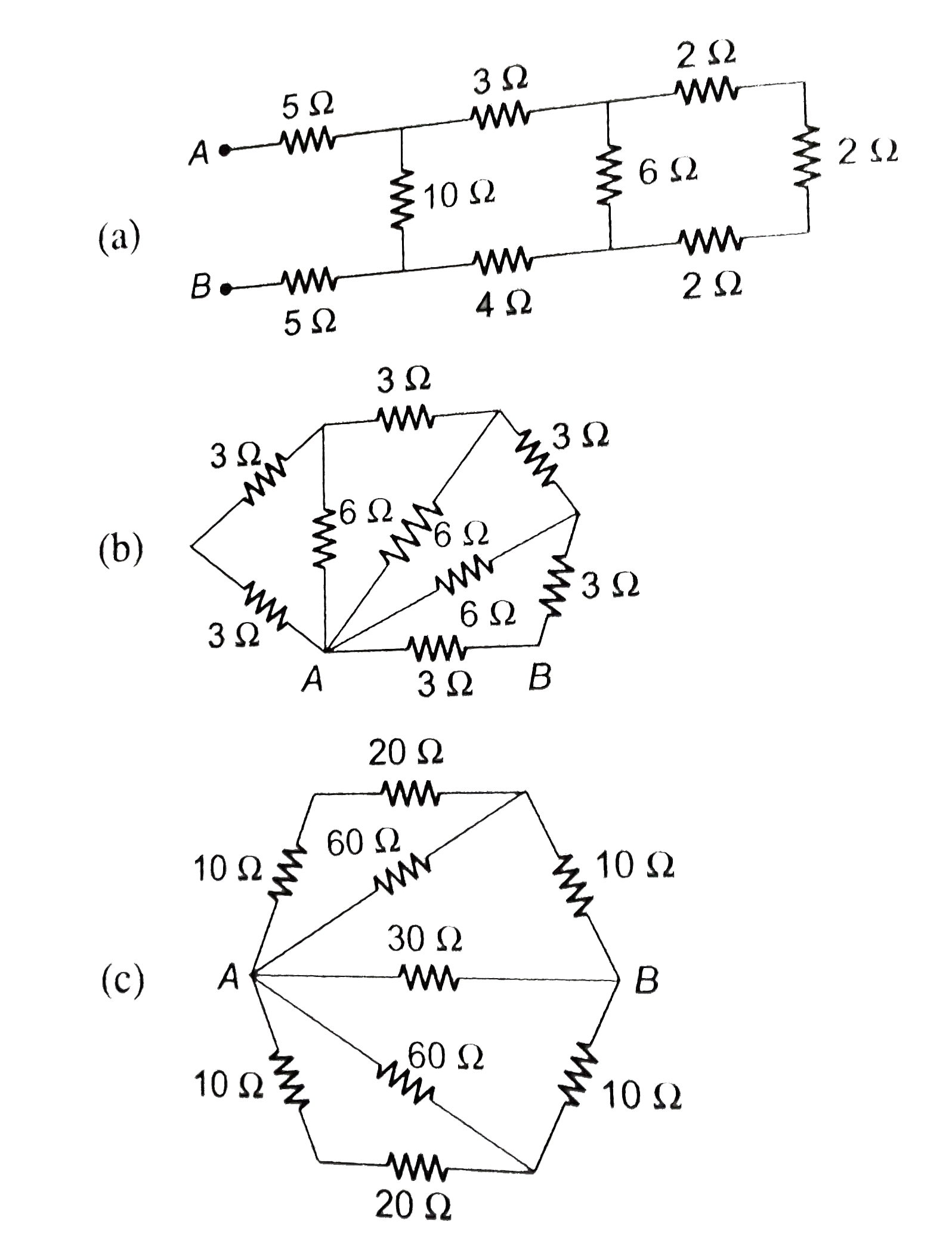 . 05:52View Solution
. 05:52View SolutionFind the equivalent resistance between `A` and `B` in the following cases.
(a)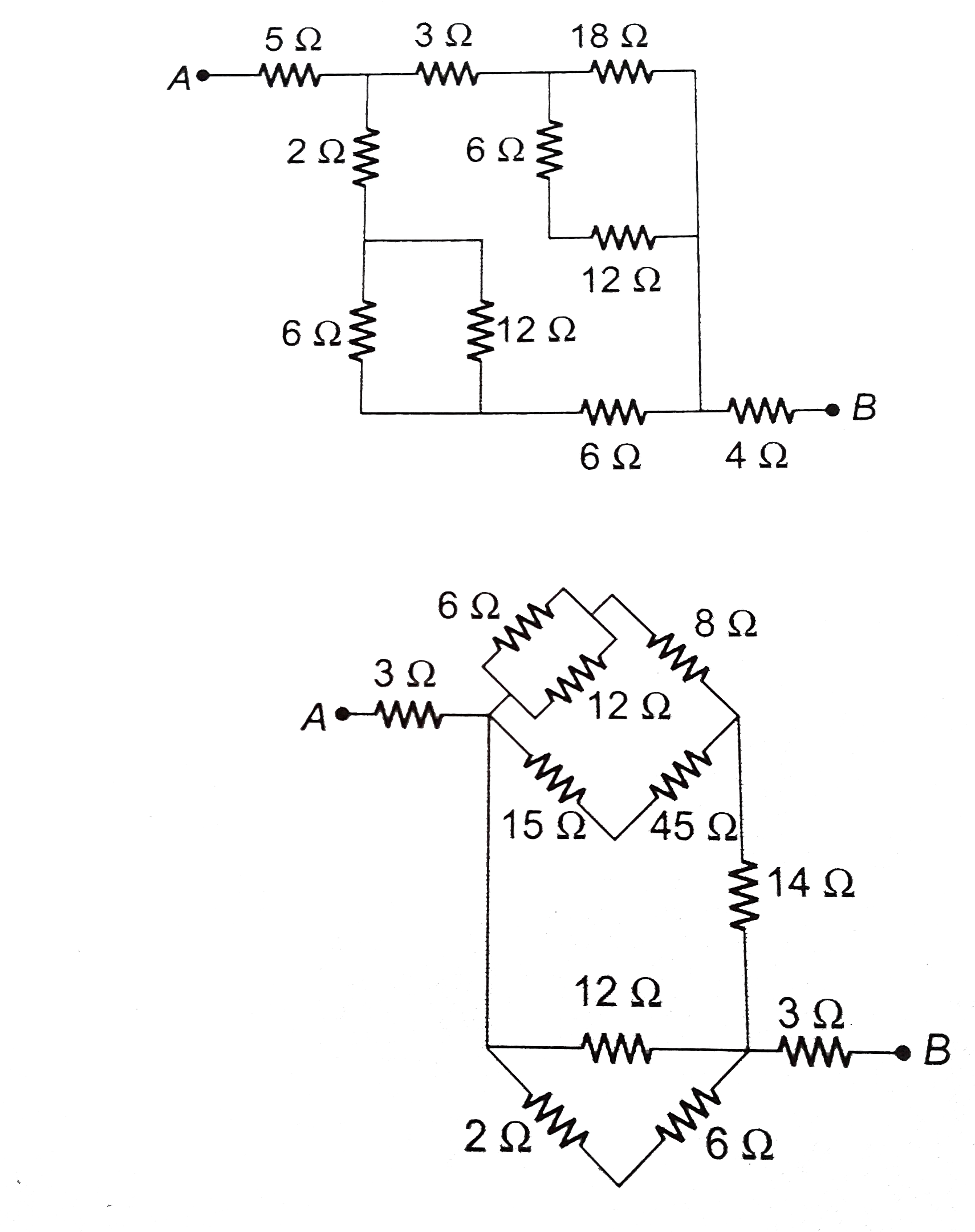 .
.
(b) .06:32View Solution
.06:32View SolutionFind the equivalent resistance between `A` and `B` in the following cases.
(a)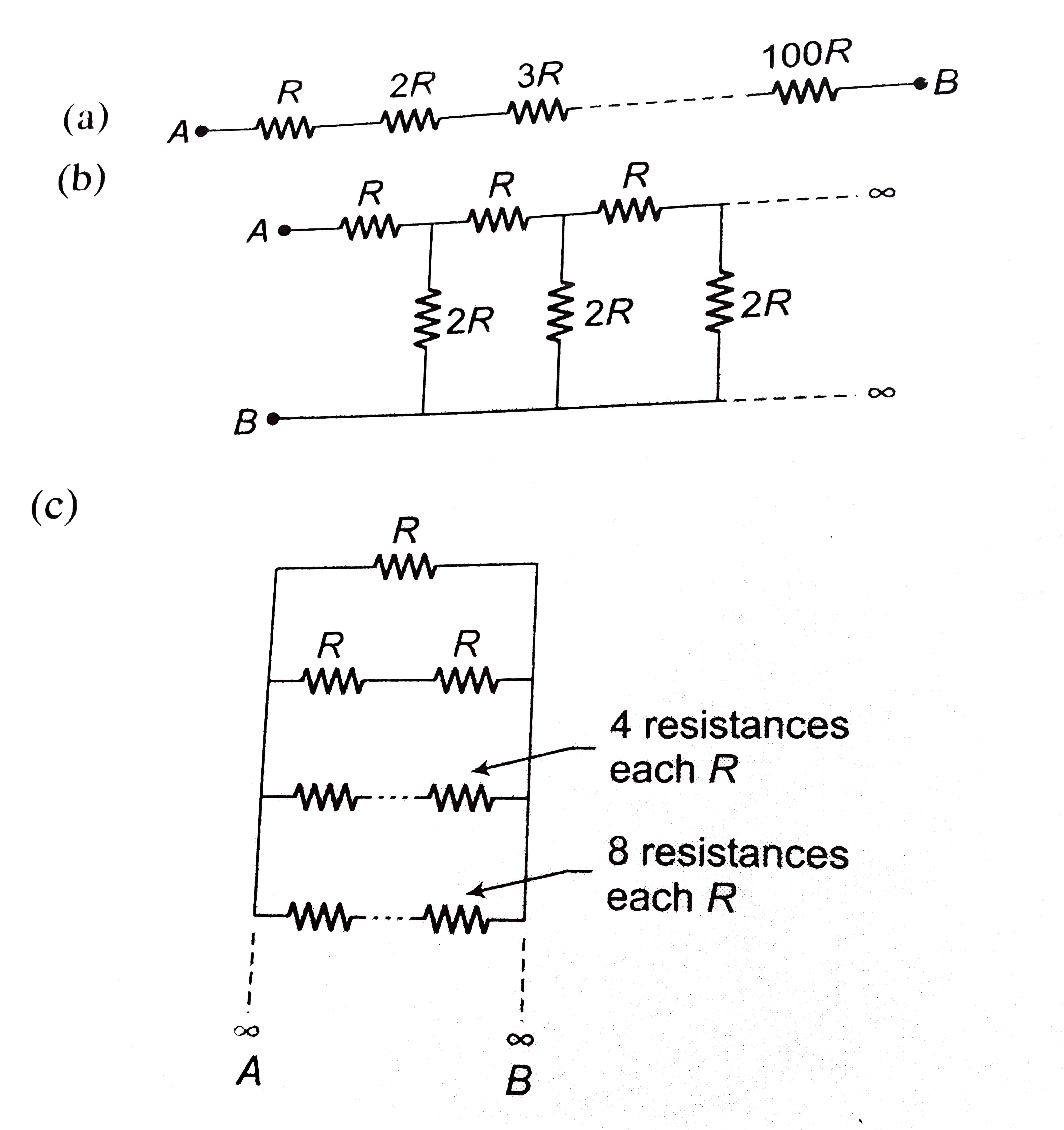 .06:24View Solution
.06:24View SolutionFind the equivalent resistance between `A` and `B`.
(a)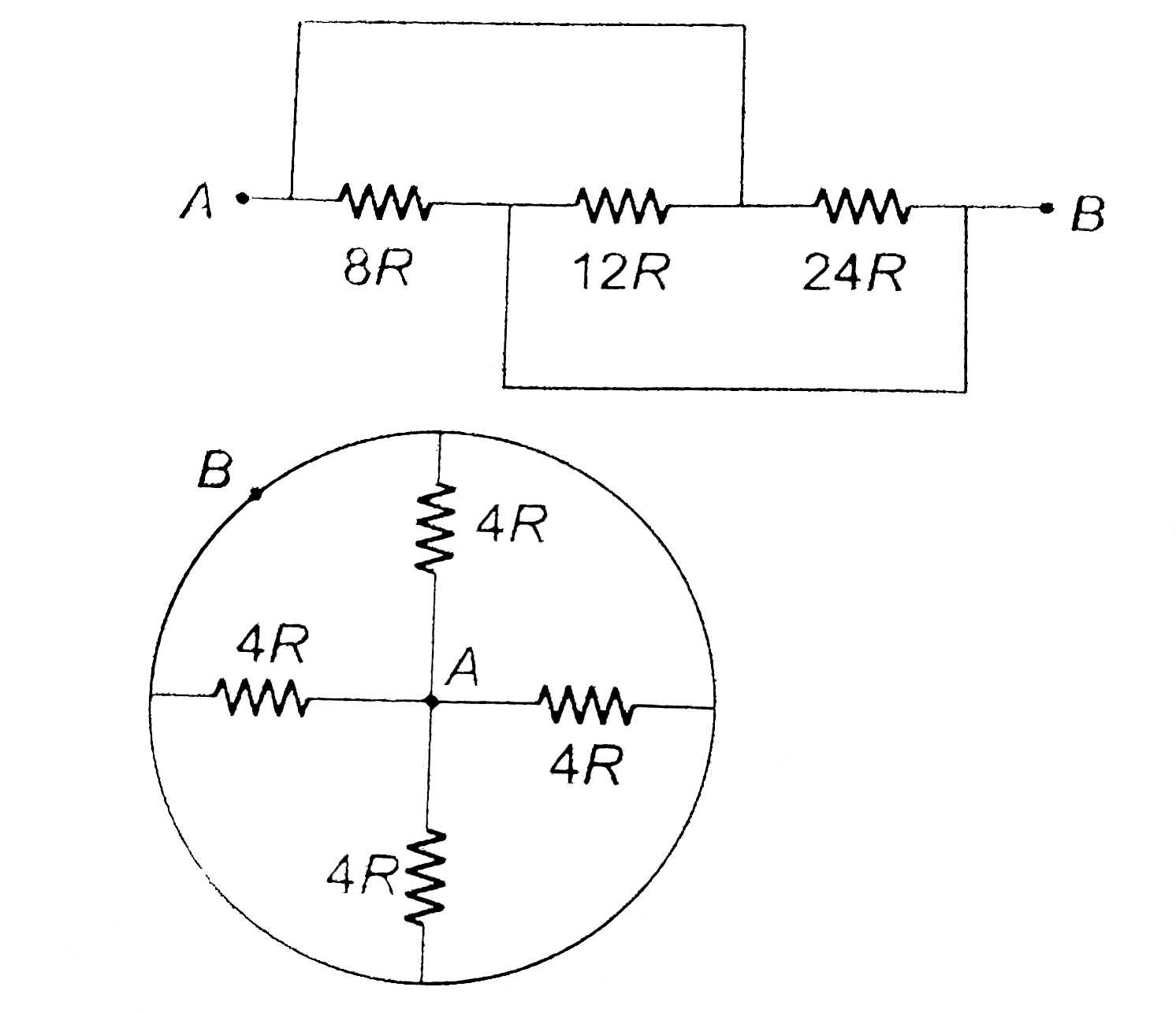
(b)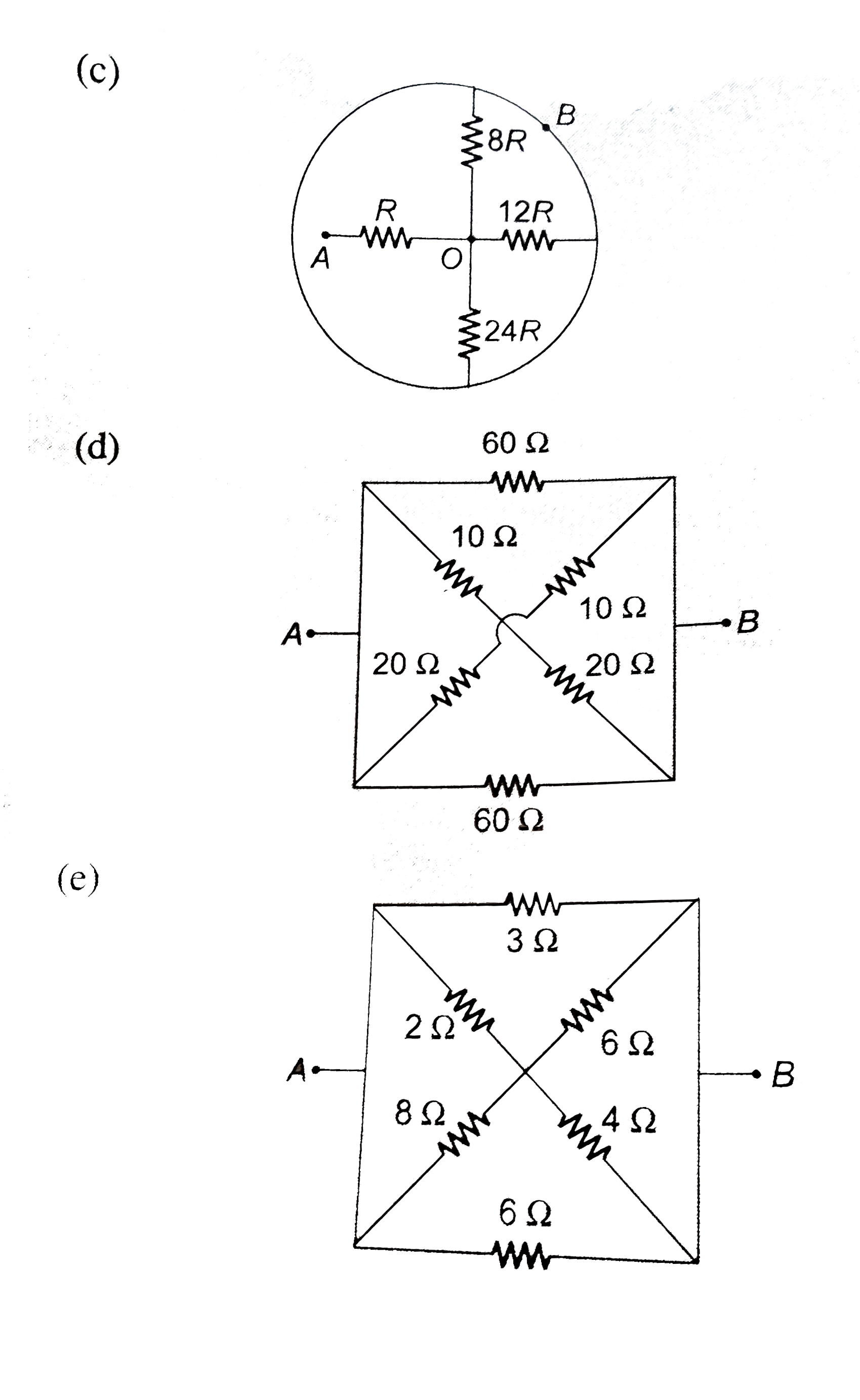 07:04View Solution
07:04View SolutionFind the equivalent resistance between `A` and `B`.
(a) 08:21View Solution
08:21View SolutionFind the equivalent resistance between `A` and `B`.
(a)
(b)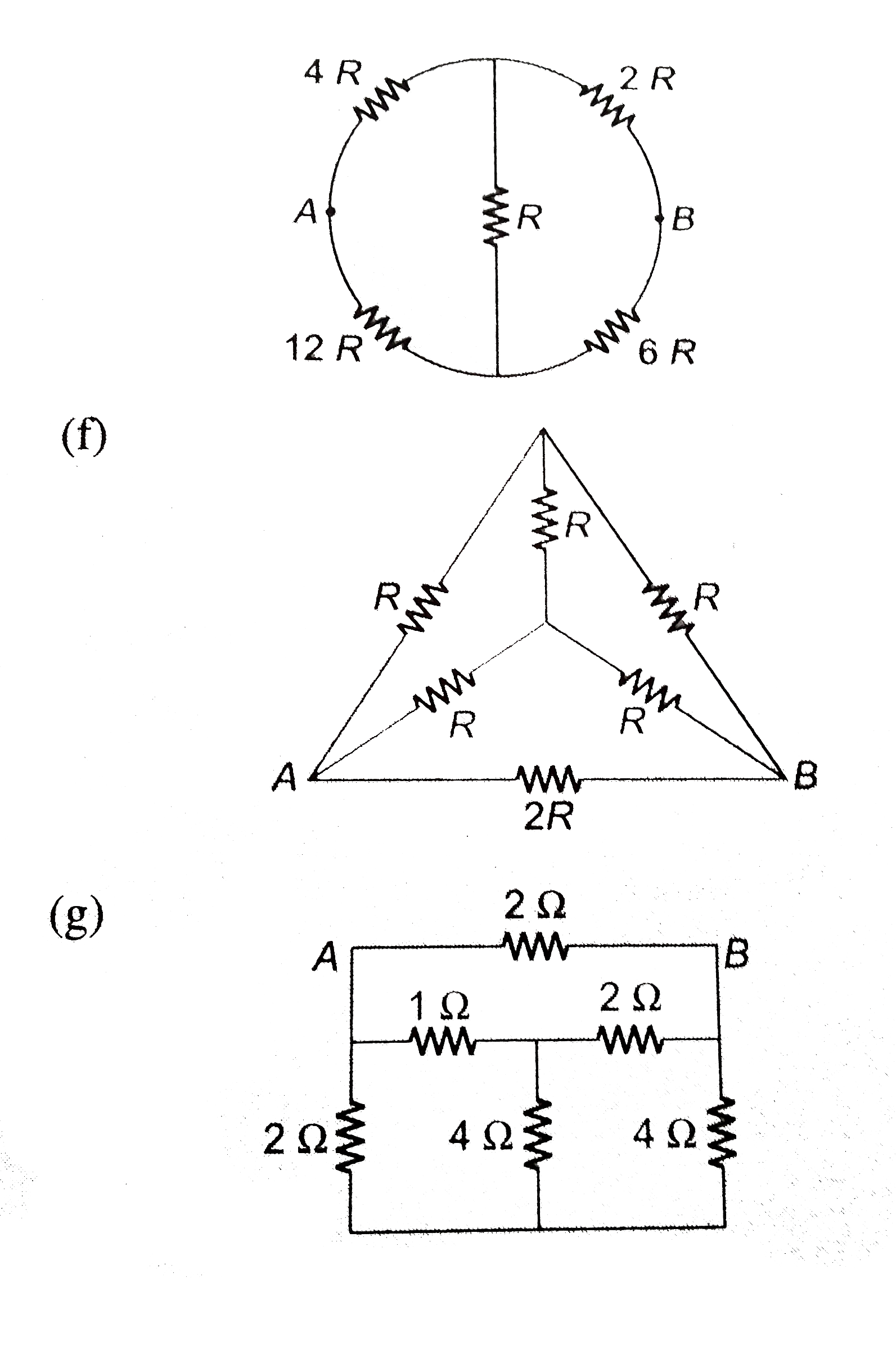 08:21View Solution
08:21View SolutionFind the equivalent resistance between `A` and `B`.
(a)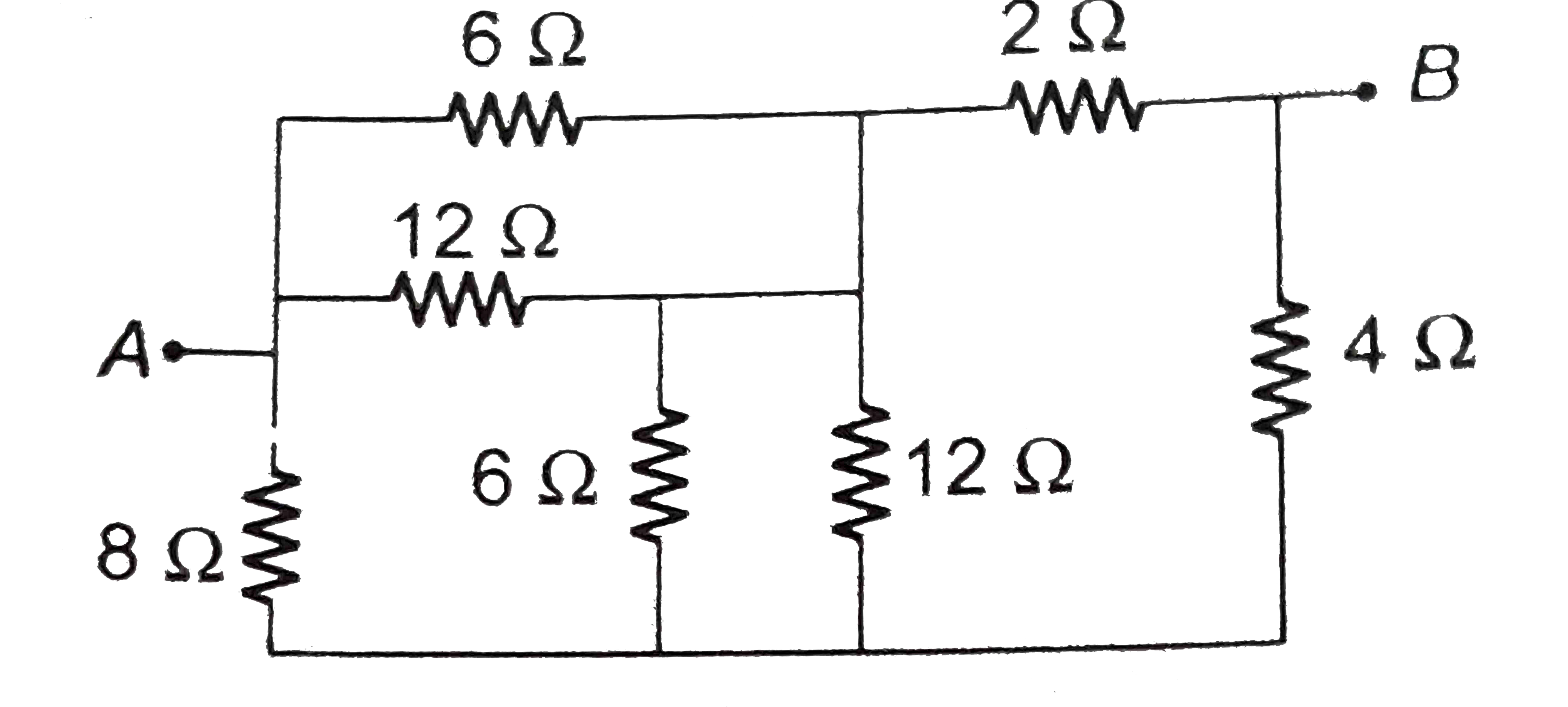
(b) Each resistance in `3R` is given in the figure.
 .05:52View Solution
.05:52View SolutionFind the equivalent resistance between `A` and `B`.
(a)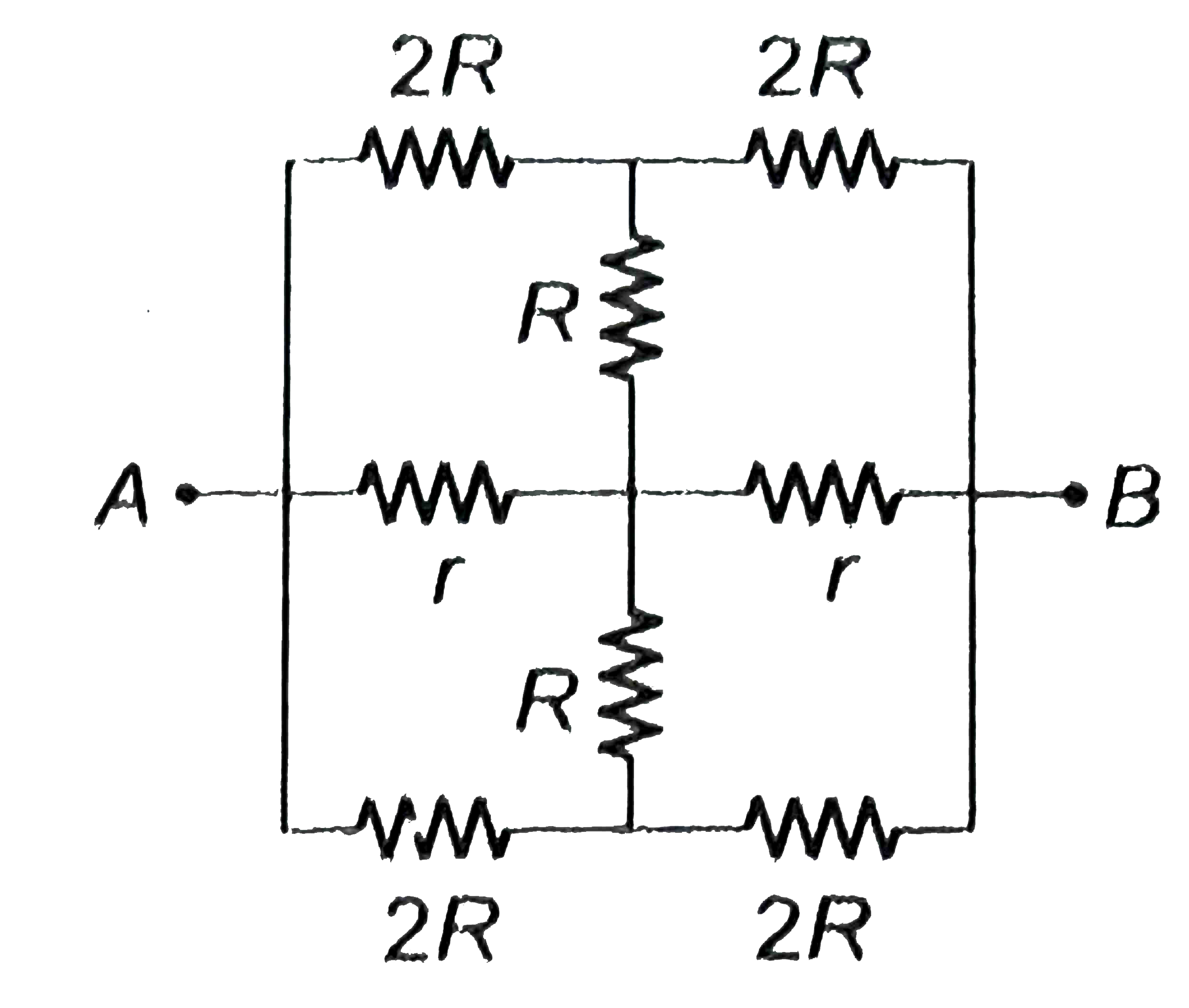
(b)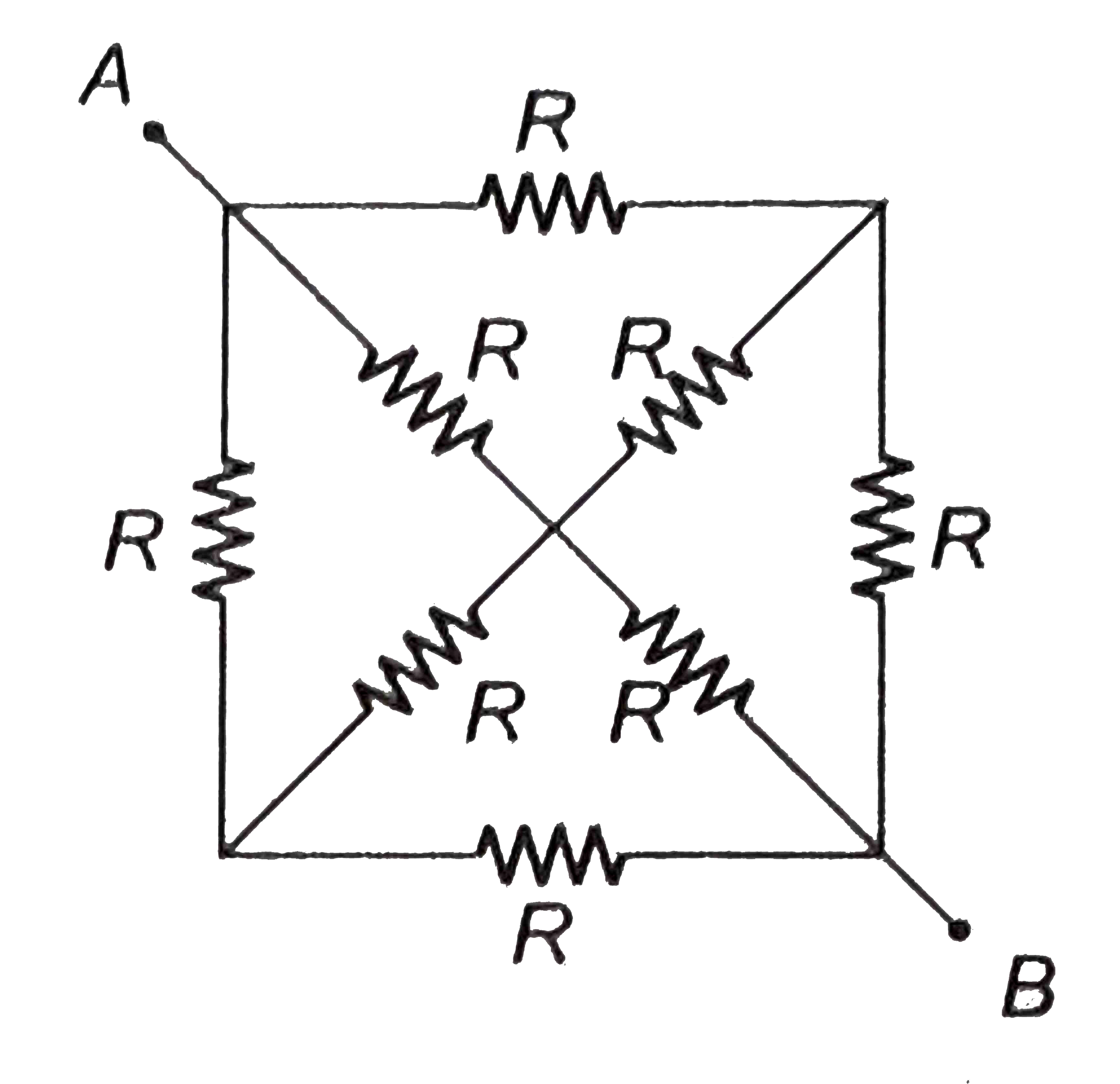
( c)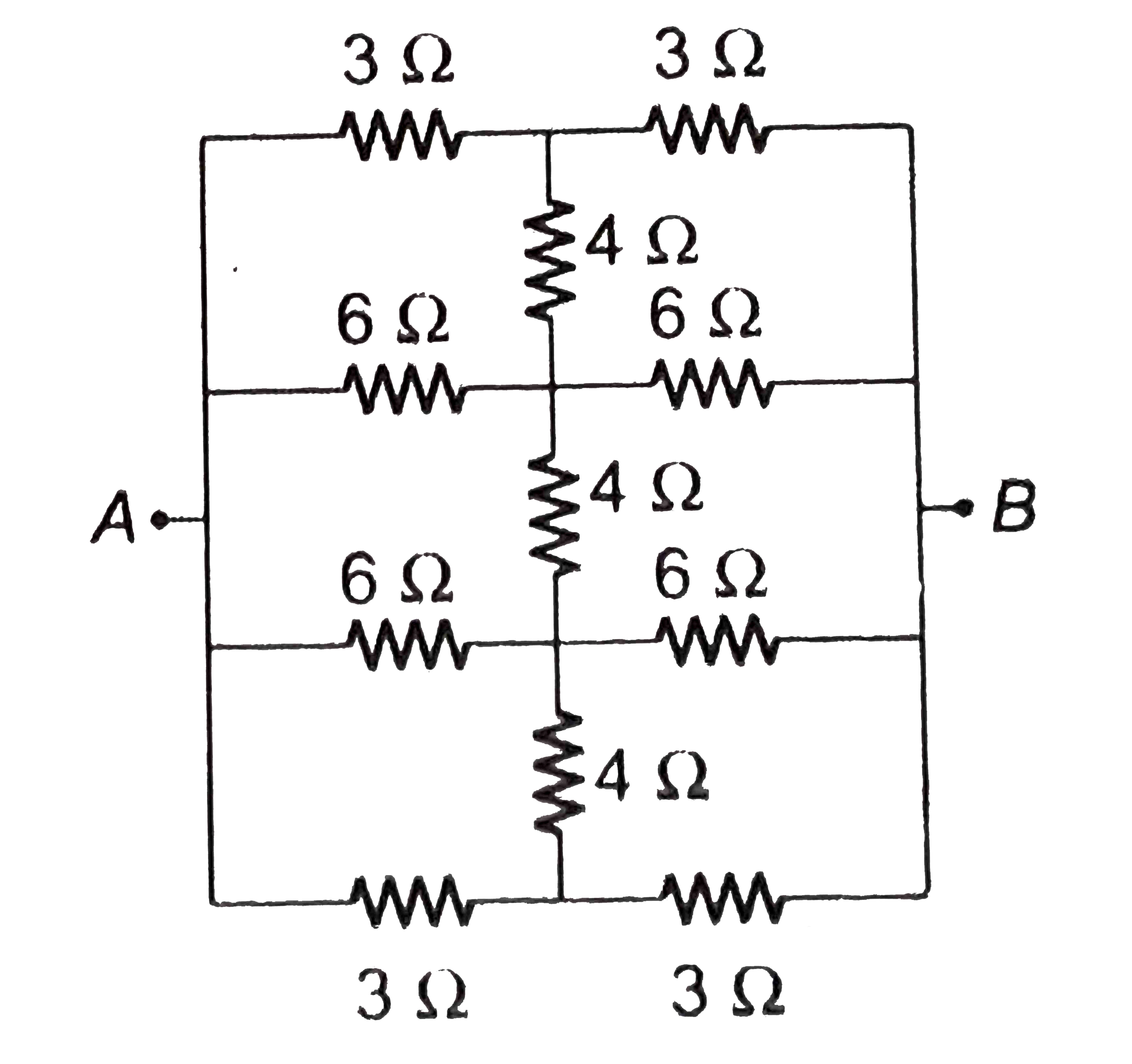
(d) Each resistance is `R`

( e)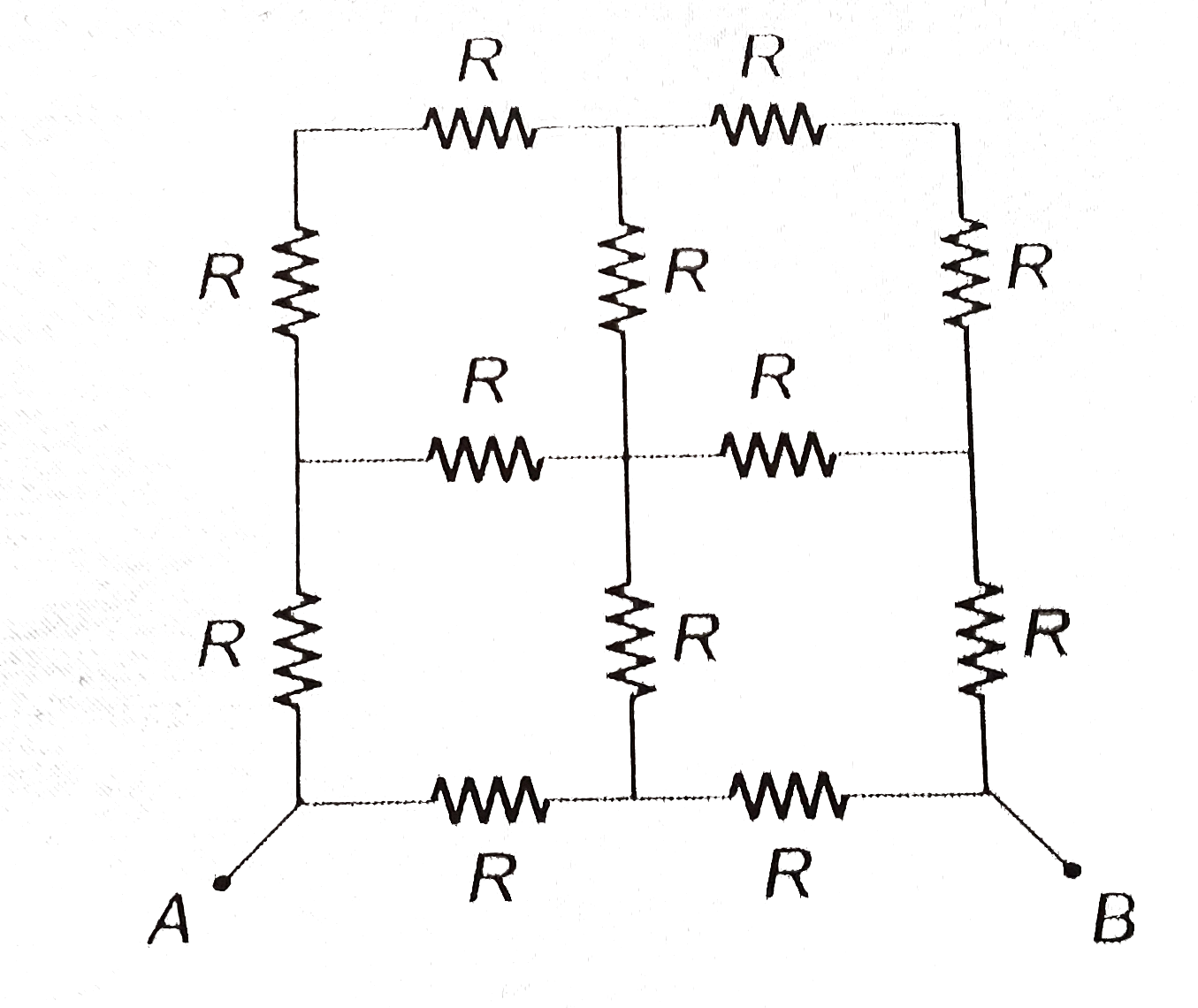 .08:28View Solution
.08:28View SolutionFind the the equivalent resistance between points `A` and `B`.
 03:06View Solution
03:06View SolutionFind the equivalent resistance between points `A` and `B` in the following circuits?
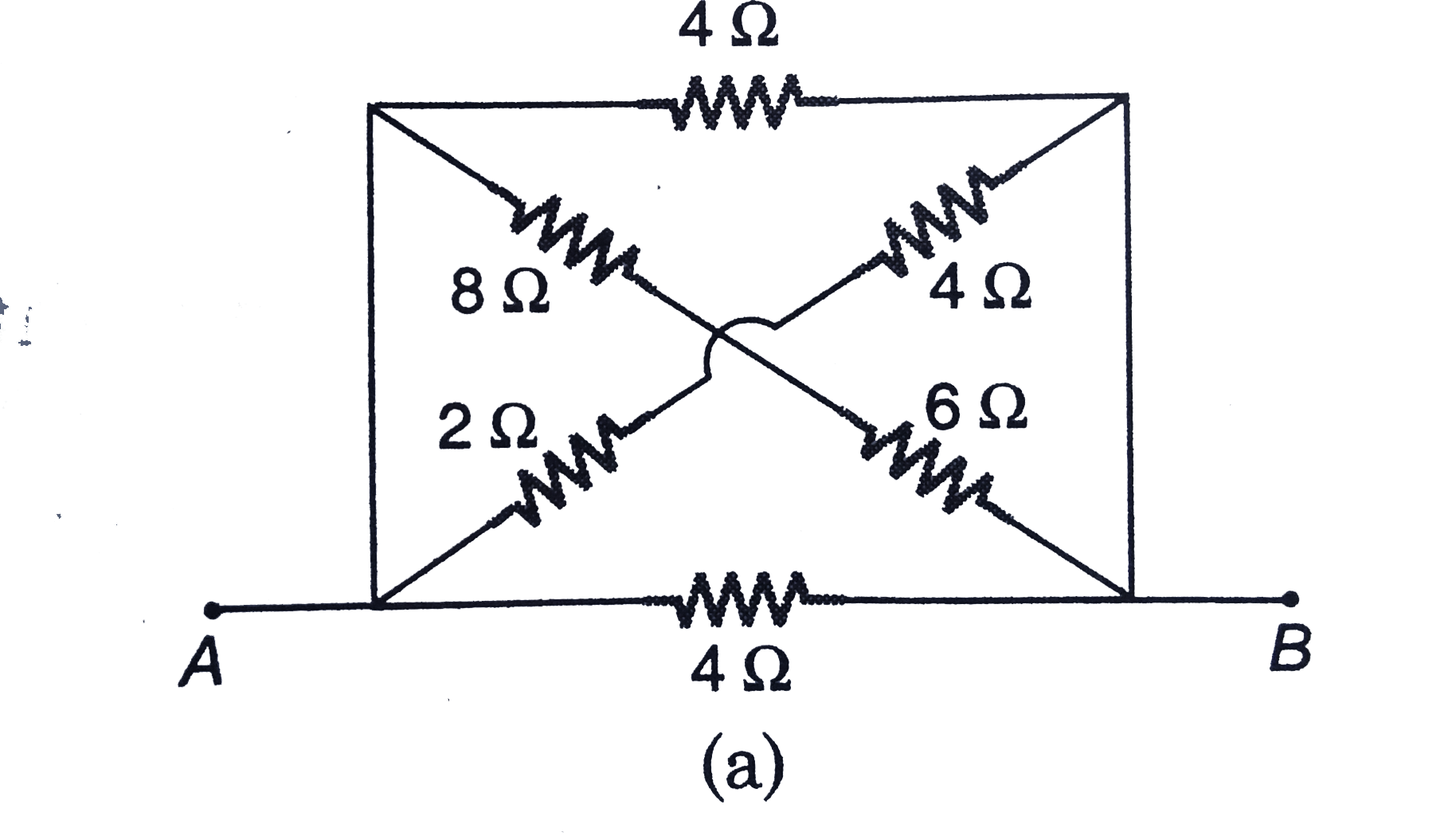
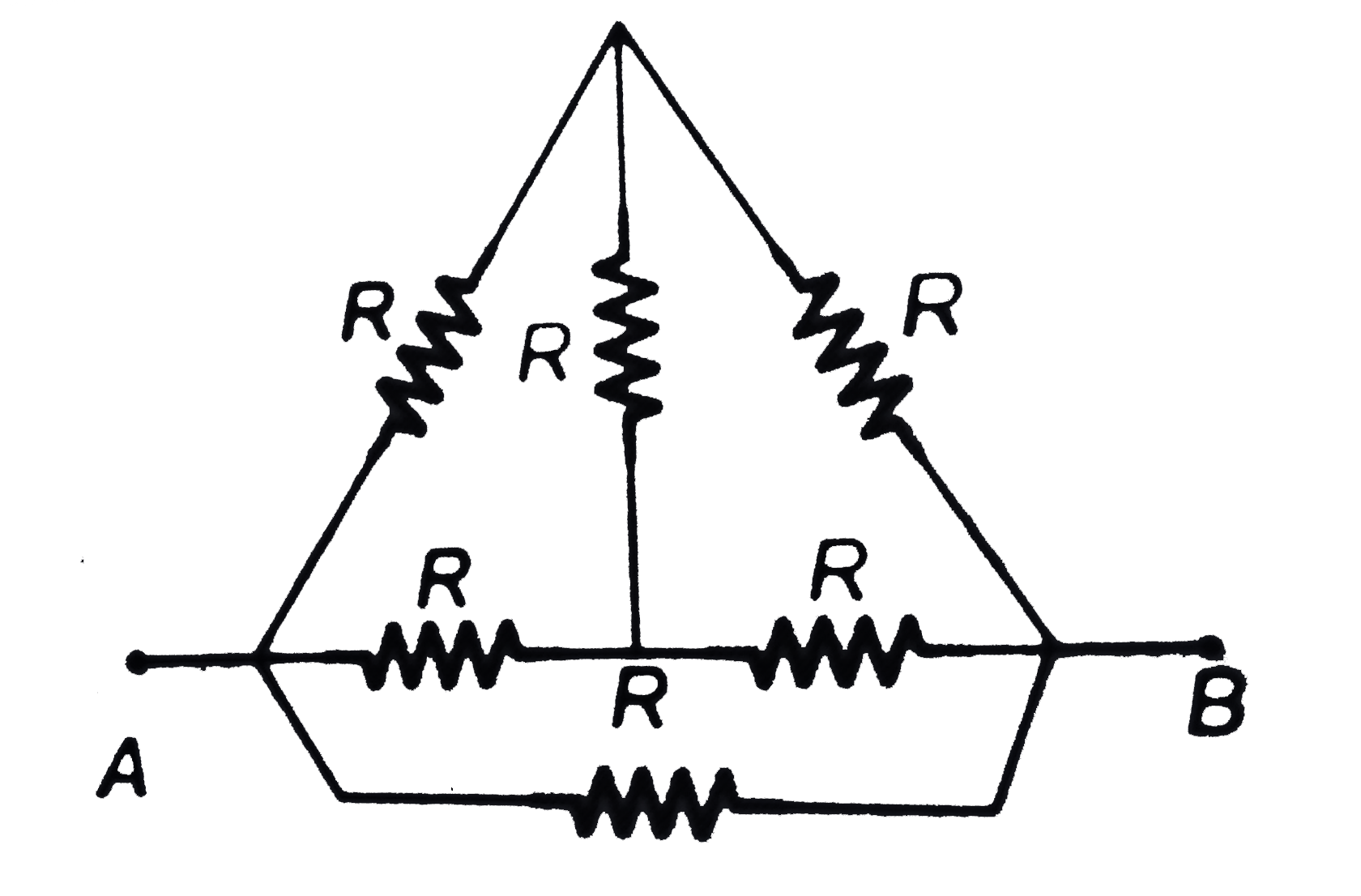

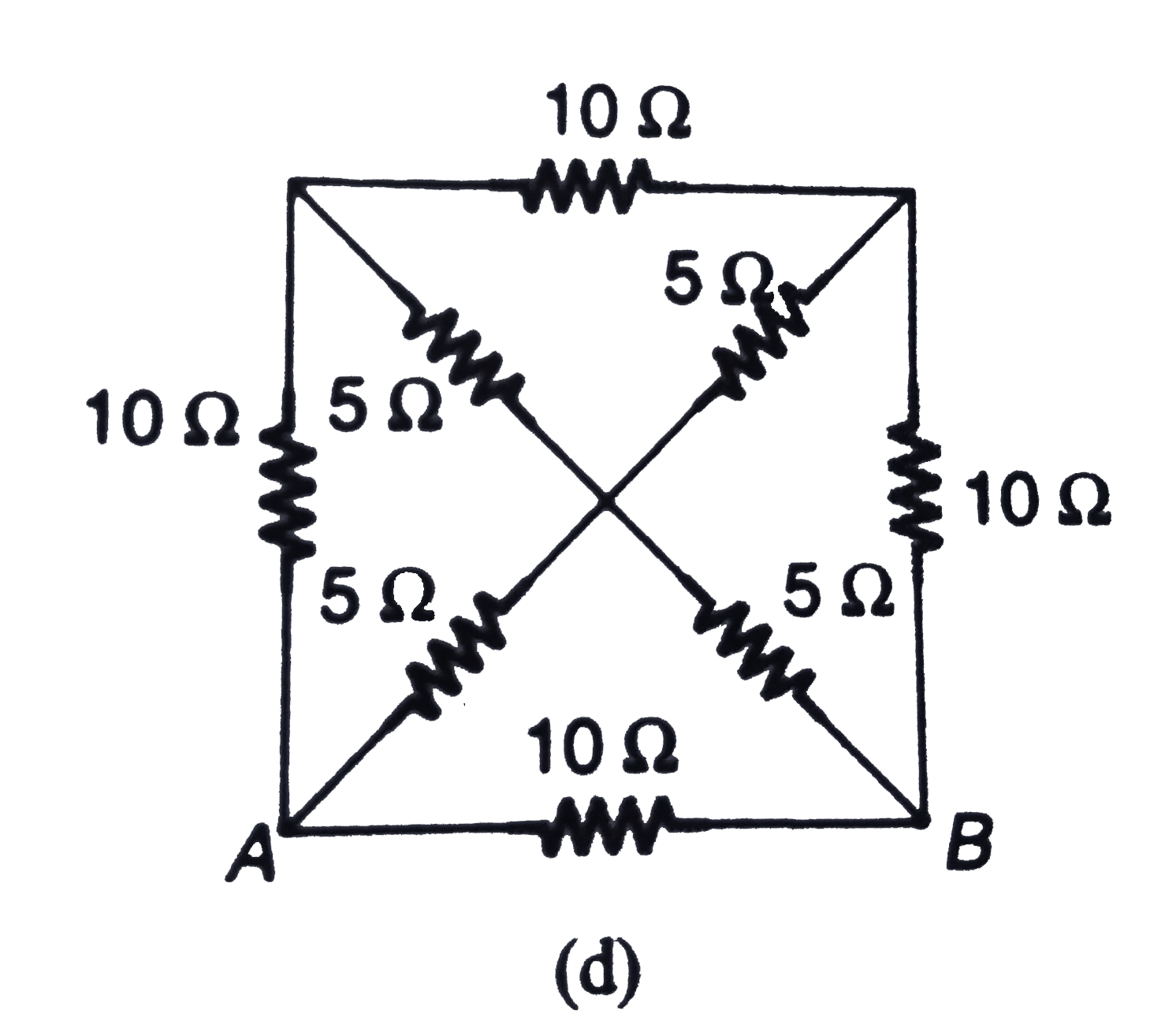
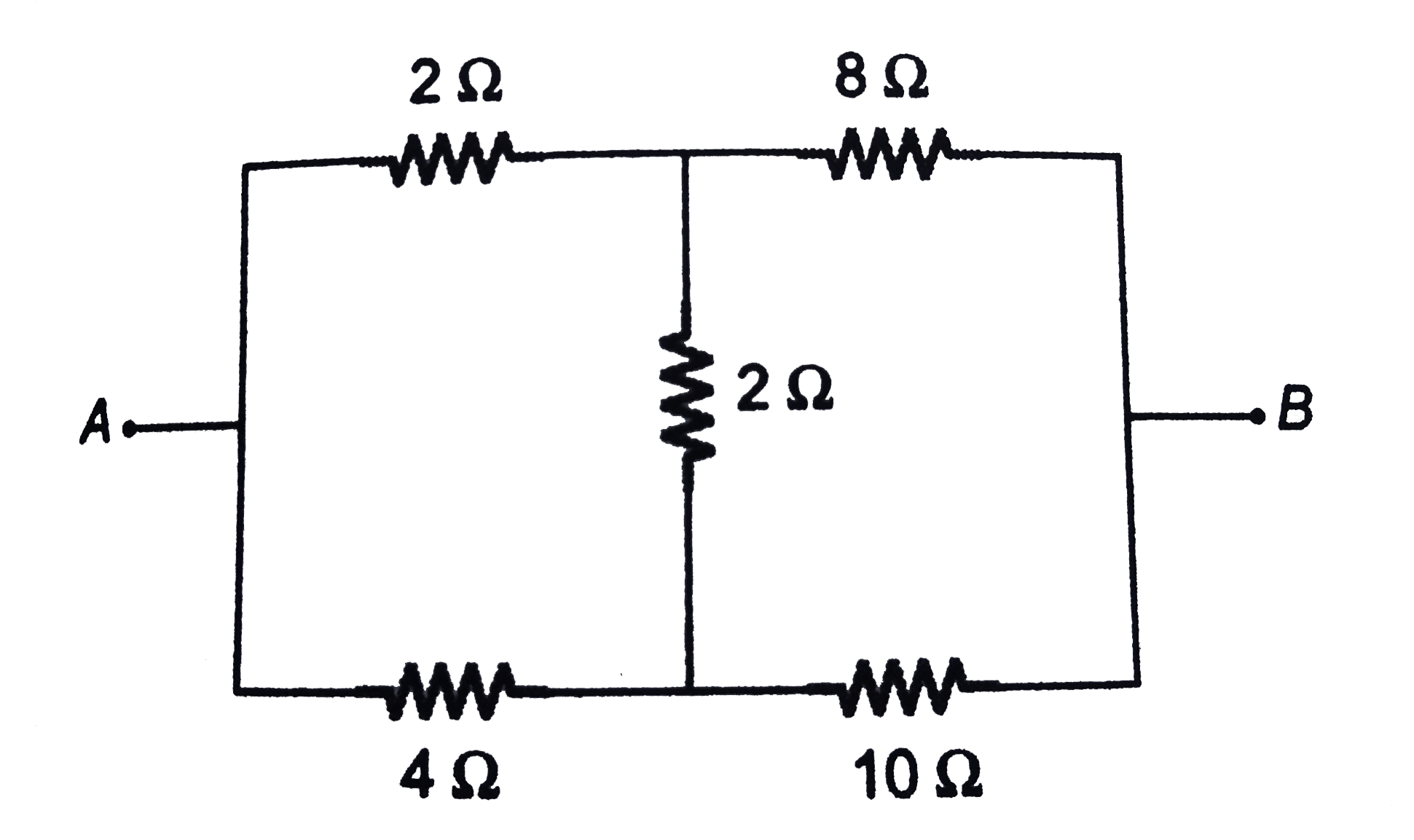
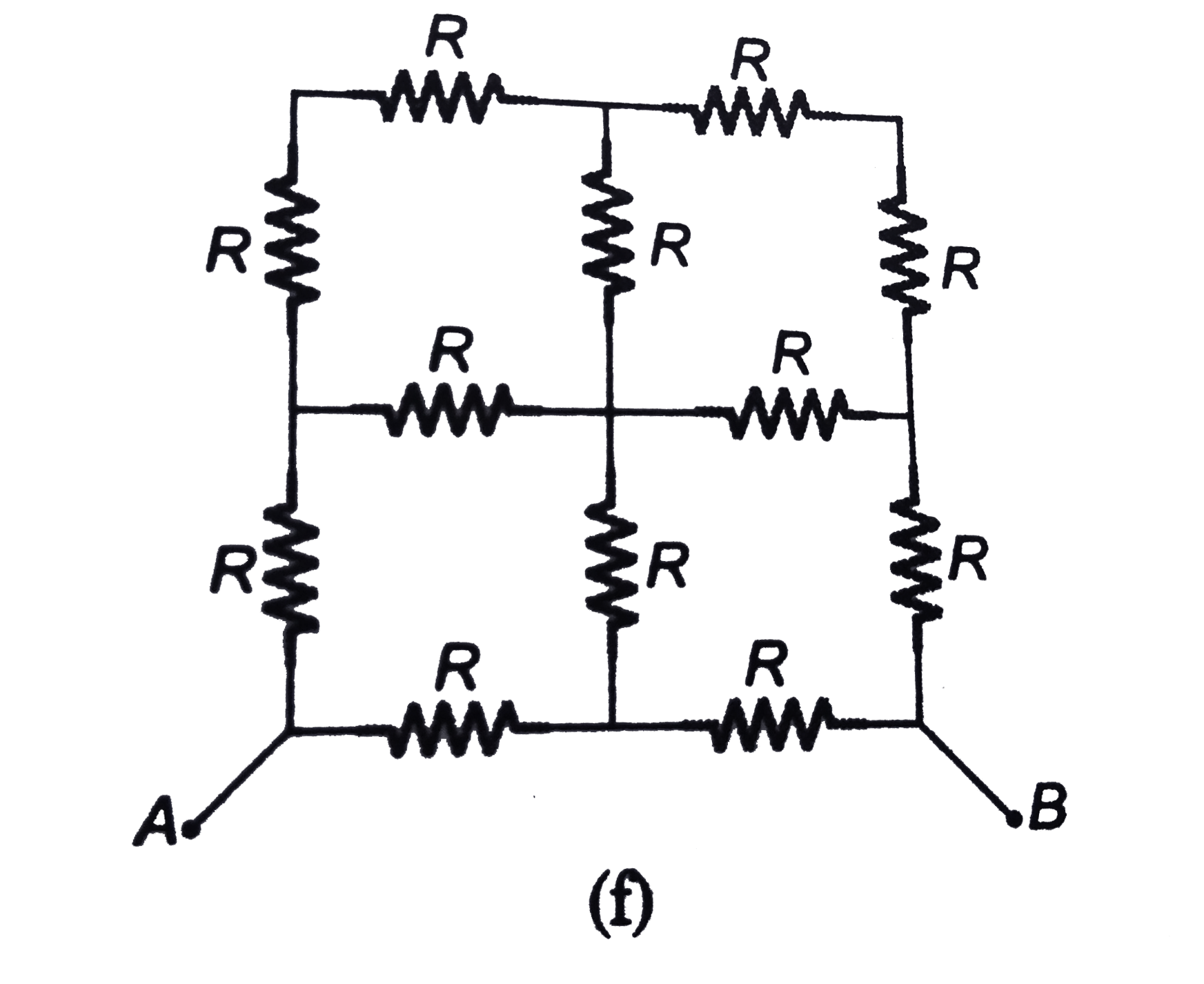
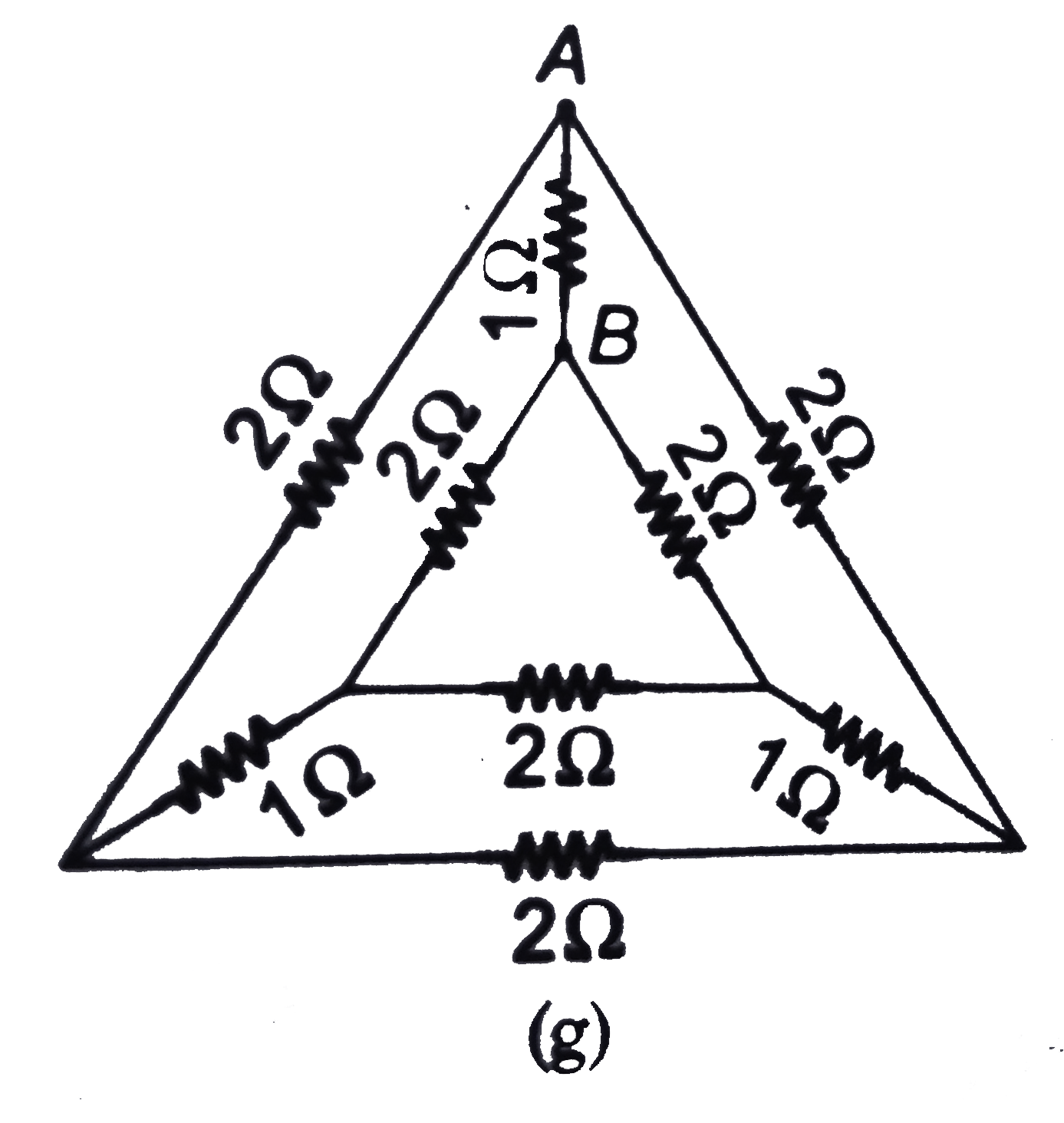 24:37View Solution
24:37View SolutionTwelve identical resistances arranged on all edges of a cube. The resistors are all the same. Then find the equivalent resistance between the edges A and B as shown in figure.
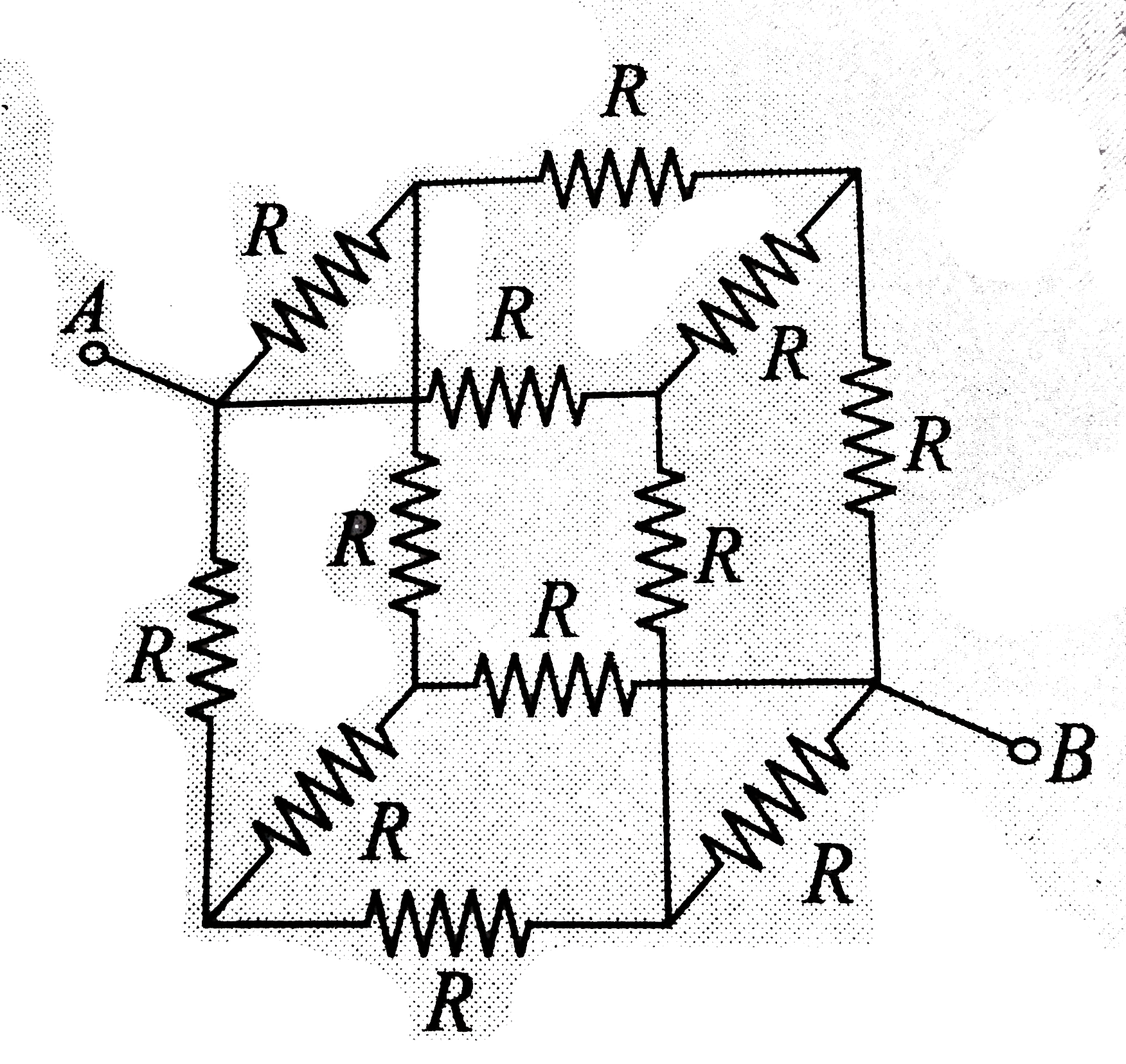 15:31View Solution
15:31View SolutionFind the equivalent resistance between `A` and `B`.
(a)
(b) 08:21View Solution
08:21View Solution(a) Determine the current supplied by the battery in the circuit as shown :

(b) Find currents in resistances `6 Omega` and `12 Omega`.

( c) Find values of `i, i_1, i_2` and `i_3`.

(d) Find current in `6 Omega` and potential difference between `A` and `B`
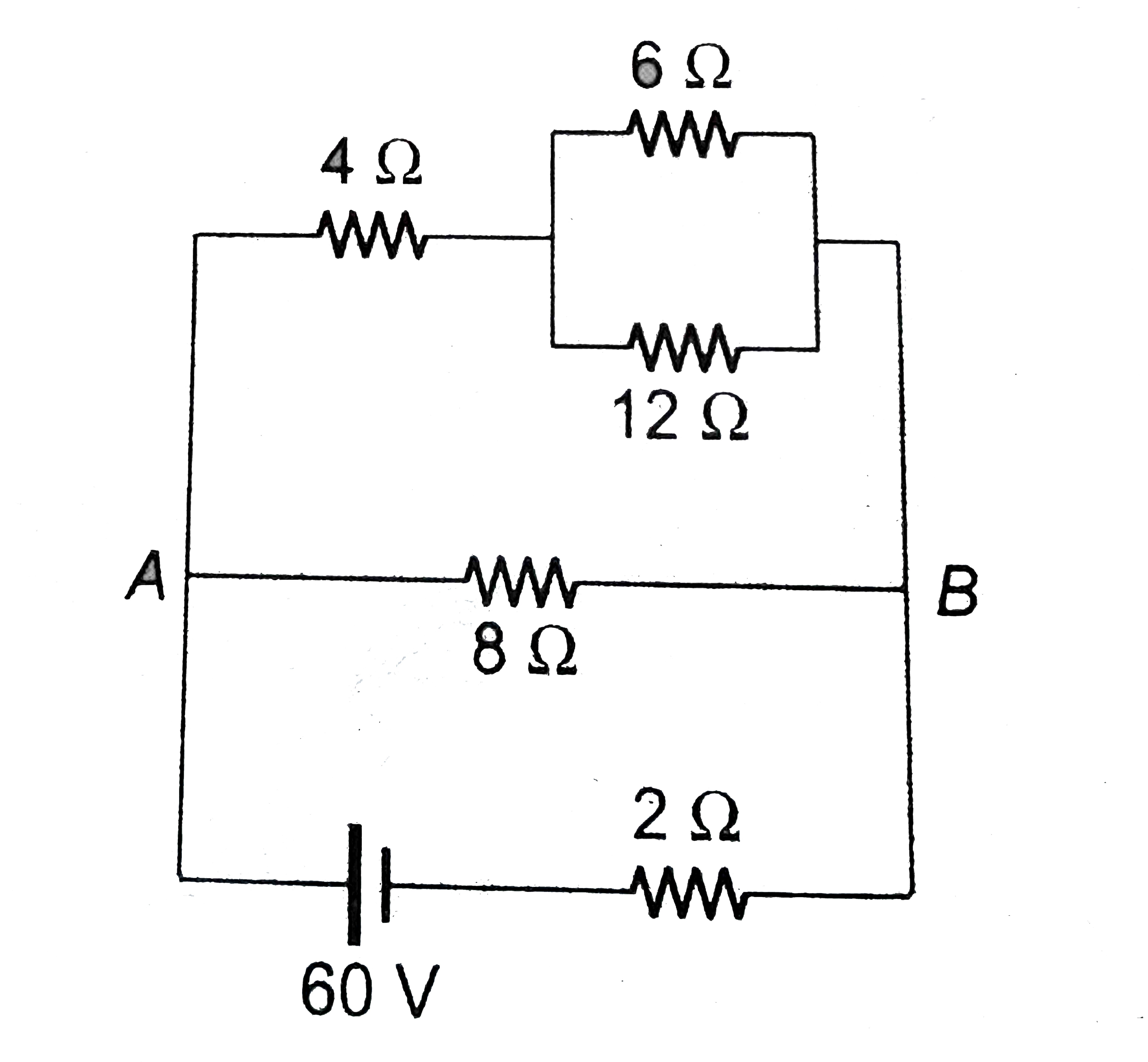 .07:28View Solution
.07:28View Solution(a) Find current through each resistance.
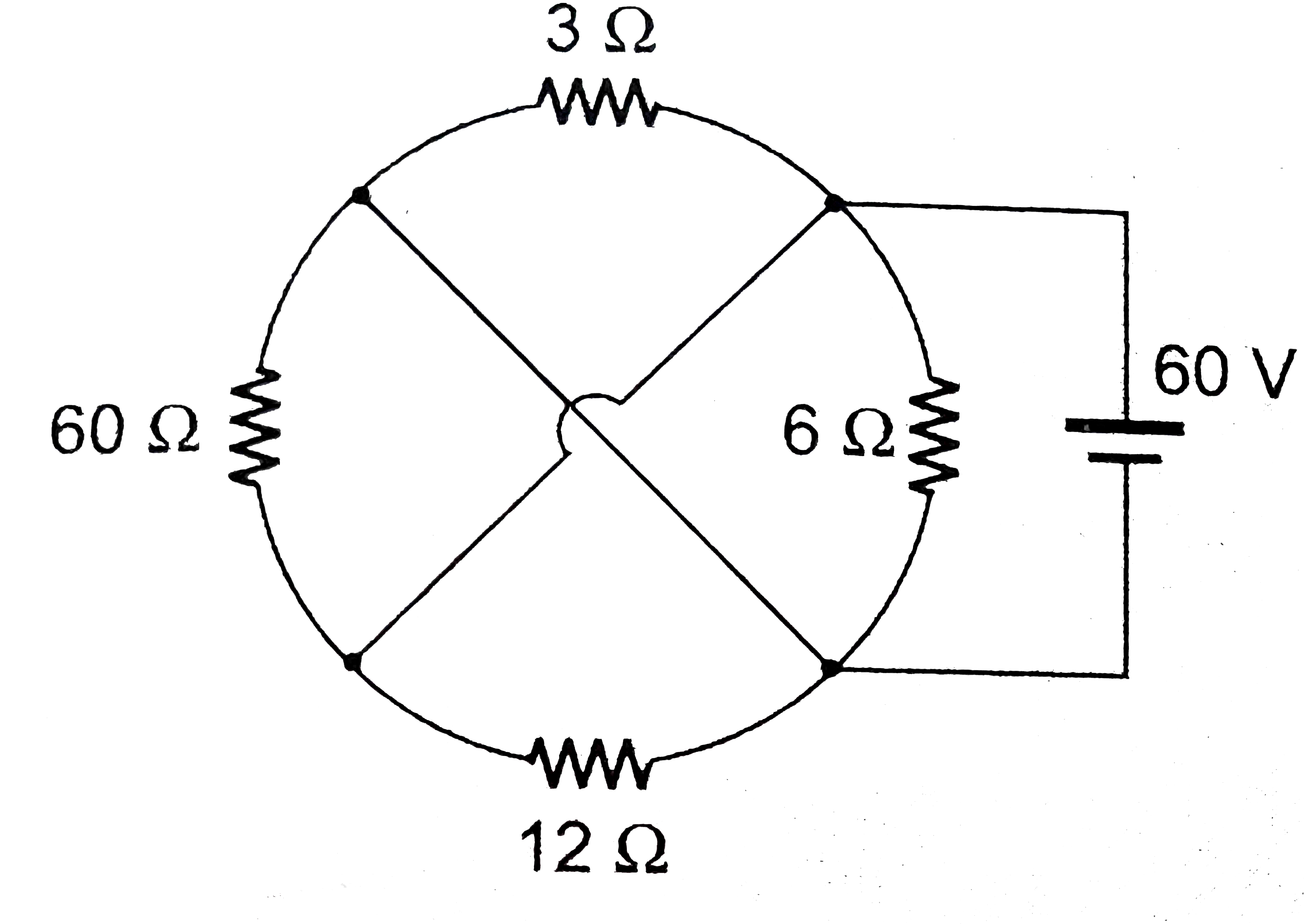 ,
,
(b) Find current flowing in branch `AB`
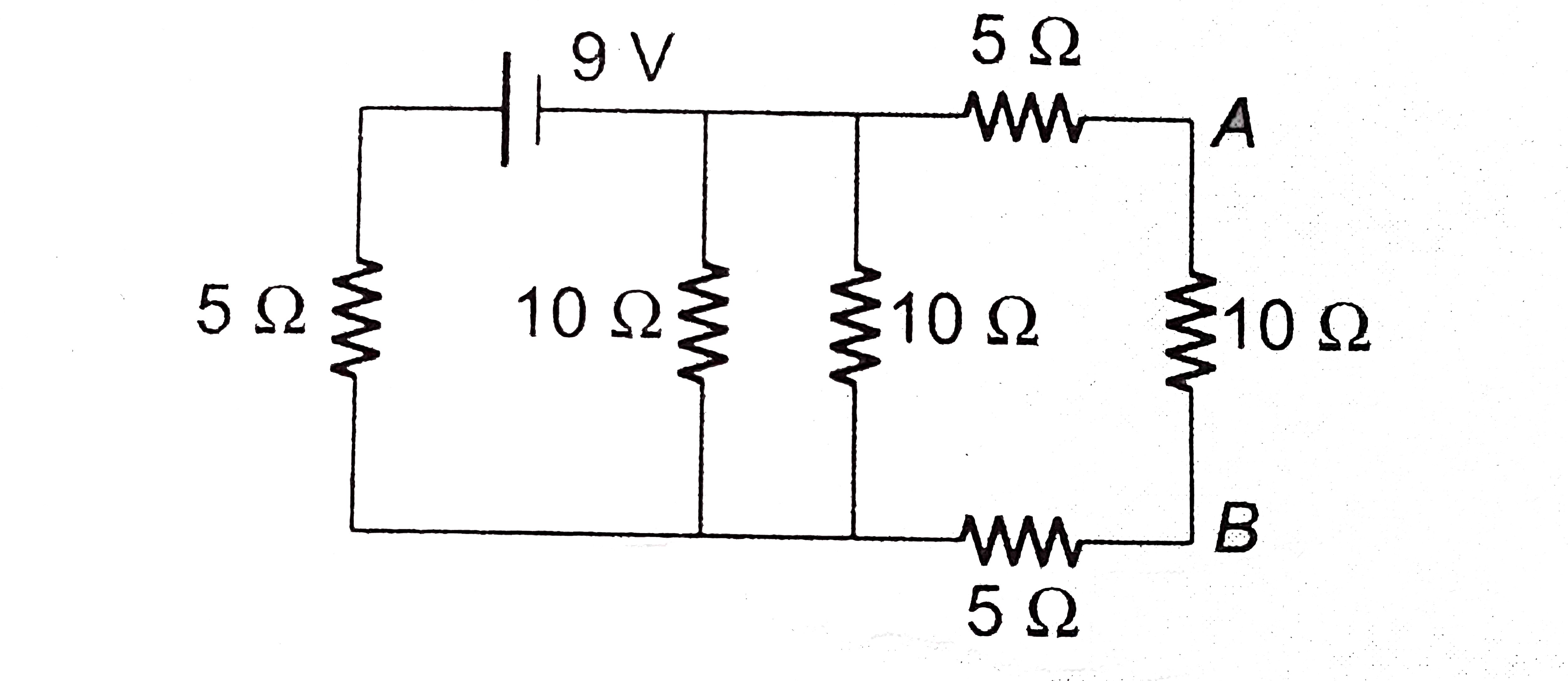
( c) Find current in `4 Omega` resistance.
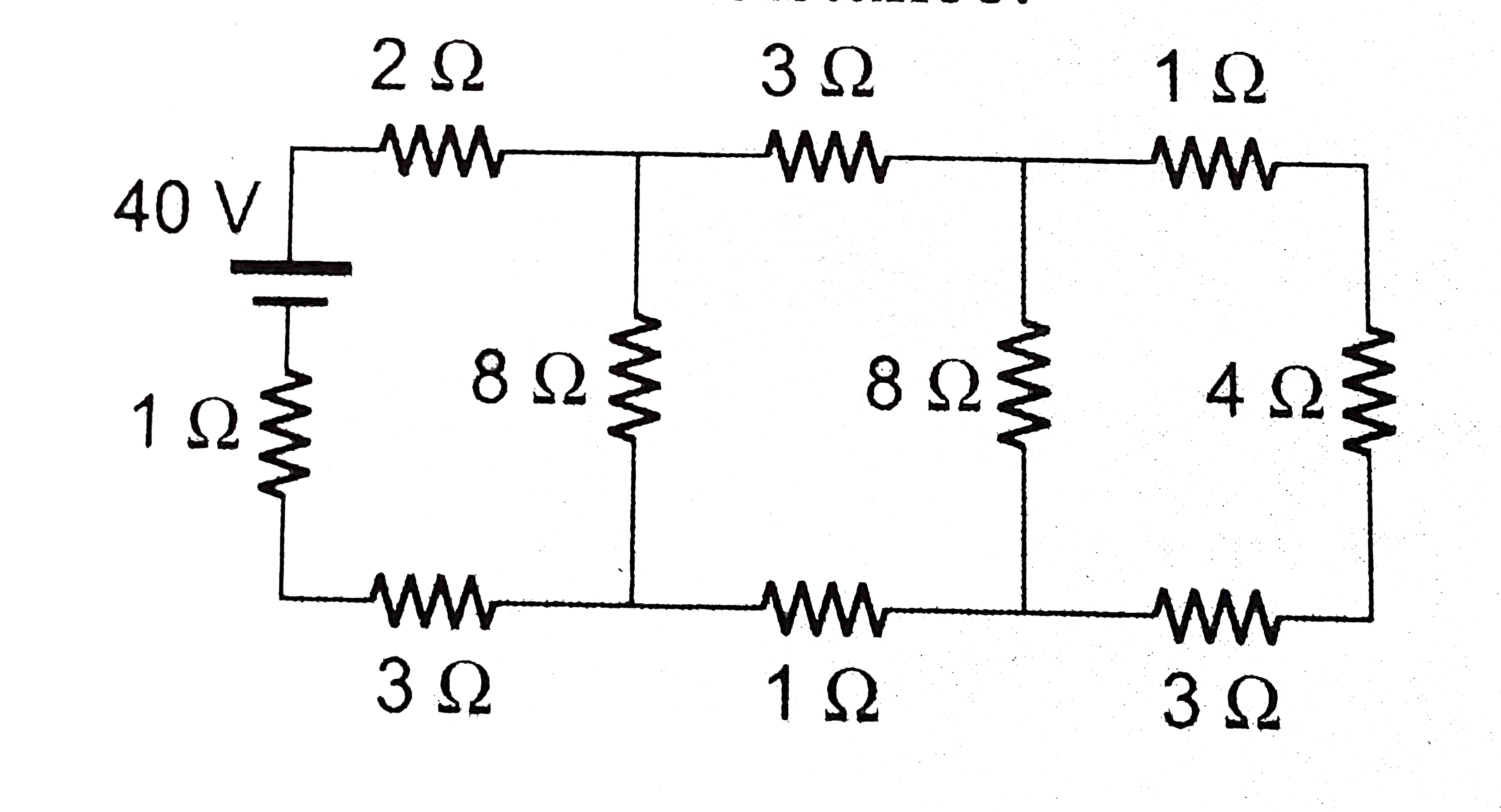
(d) Find `i_0, i_1` and `V_X - V_Y`.
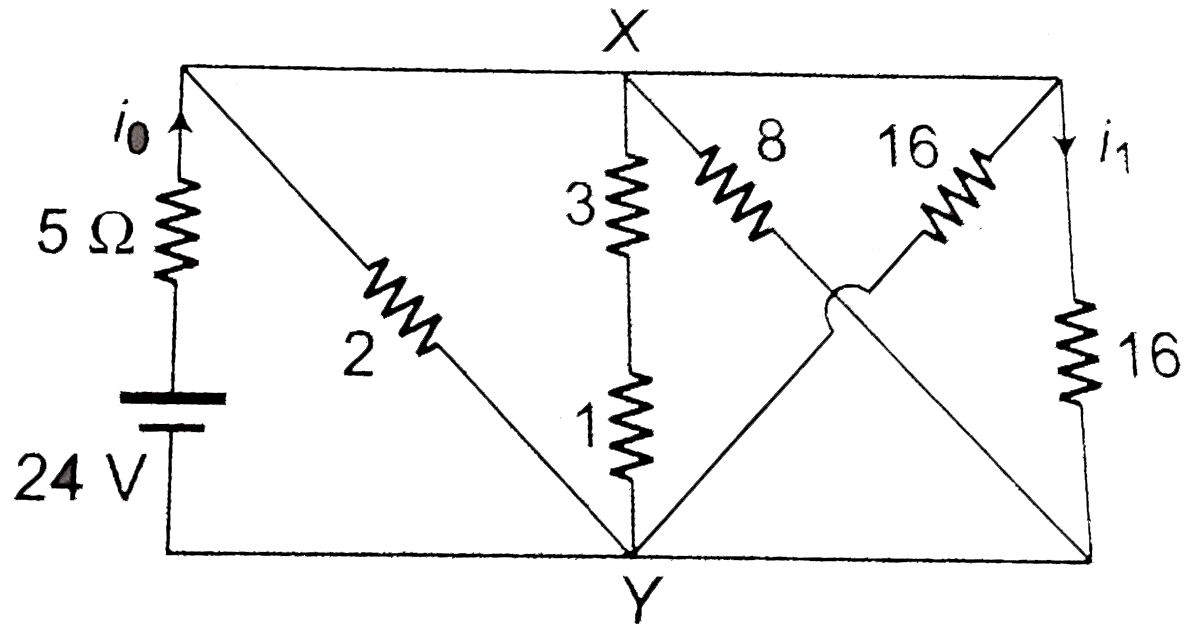 .09:37View Solution
.09:37View Solution(a) The emf of a cell is `E` and its intenal resistance is `r`. Its terminals are connected to a resistance `R`. The potential difference between the terminal is `12 V` if `R = 3 Omega` and `16 V` if `R = 8 Omega`. Find the values of `E` and `r`
(b) When an unknown resistance is connected across a series combination of two identical cells, each of `18 V`, current through the resistance is `4 A`. When it is connected across a parallel combination of the same cells, the current through it is `3 A`. Find the unknown resistance and internal resistance of each cell.
( c) `p` identical cells, each of emf `E` and internal resistance `r`, are joined in series to form a closed circuit. One cell `(X)` is joined with reversed polarity. Find the potential difference across each cell except `X` and also across `X`.
(d) `12` cells each having the same emf are connected in series and are kept in a closed box. Some of the cells are wrongly connected. This battery is connected in series with an ideal ammeter and two cells of same emf as of `12` cells. The current is `3 A` when the cells and the battery aid each other and `2 A` when the cells and battery oppose each other. How many cells in the battery are wrongly connected ?View Solution`N` sources of current with different emf's are connected as shown in Fig. The emf of the sources are proportional to their internal resistancs, i.e., `E = alpha R`, where `alpha` is an assigned constatant. The lead wire resistance is neglible. Find:
(a) the current in the circuit ,
(b) the potential differences between points `A` and `B` dividing the circuit in `n` and `N- n` links.
 03:12View Solution
03:12View Solution(a) When a cell is connected in series with some external resistance, a current `alpha` flows through it. When one more identical cell is connected in series with the first one, a current `beta` is found to flow in the circuit. When same cell is connected in parallel with the first one, the current is found to be `delta`. Find the value of `alpha` in terms of `beta` and `delta`.
(b) It is required to send a current of `8 A` through a circuit whose resistance is `5 Omega`. What is the least number of accumulators which must be used for this purpose and how should they be connected ? The emf of each accumulator is `2 V` and the internal resistance is `0.5 Omega`.08:15View SolutionFind current `i` in the circuit in the following cases.
(a)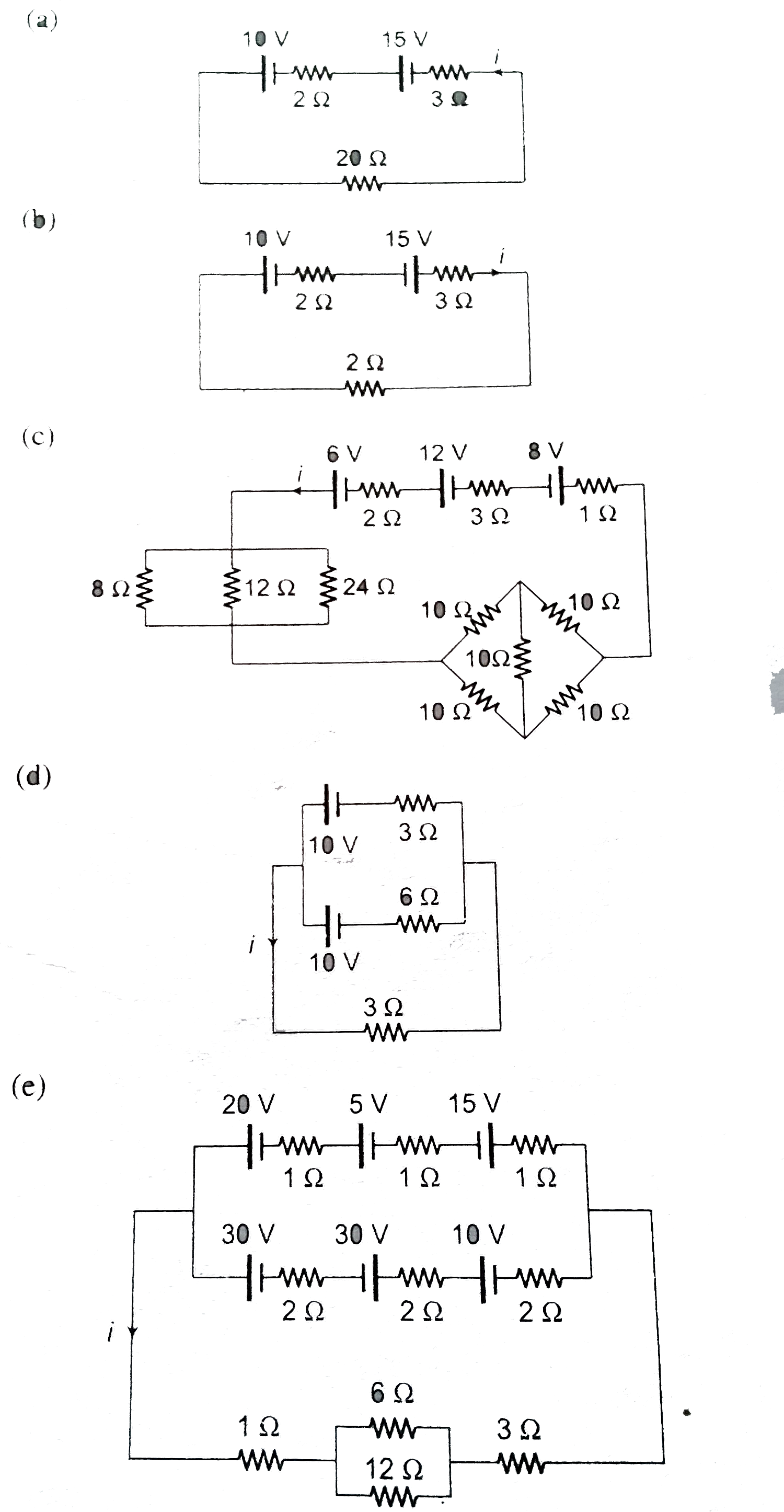
(b) 07:16View Solution
07:16View Solution(a) Find the potential difference between `A` and `B`
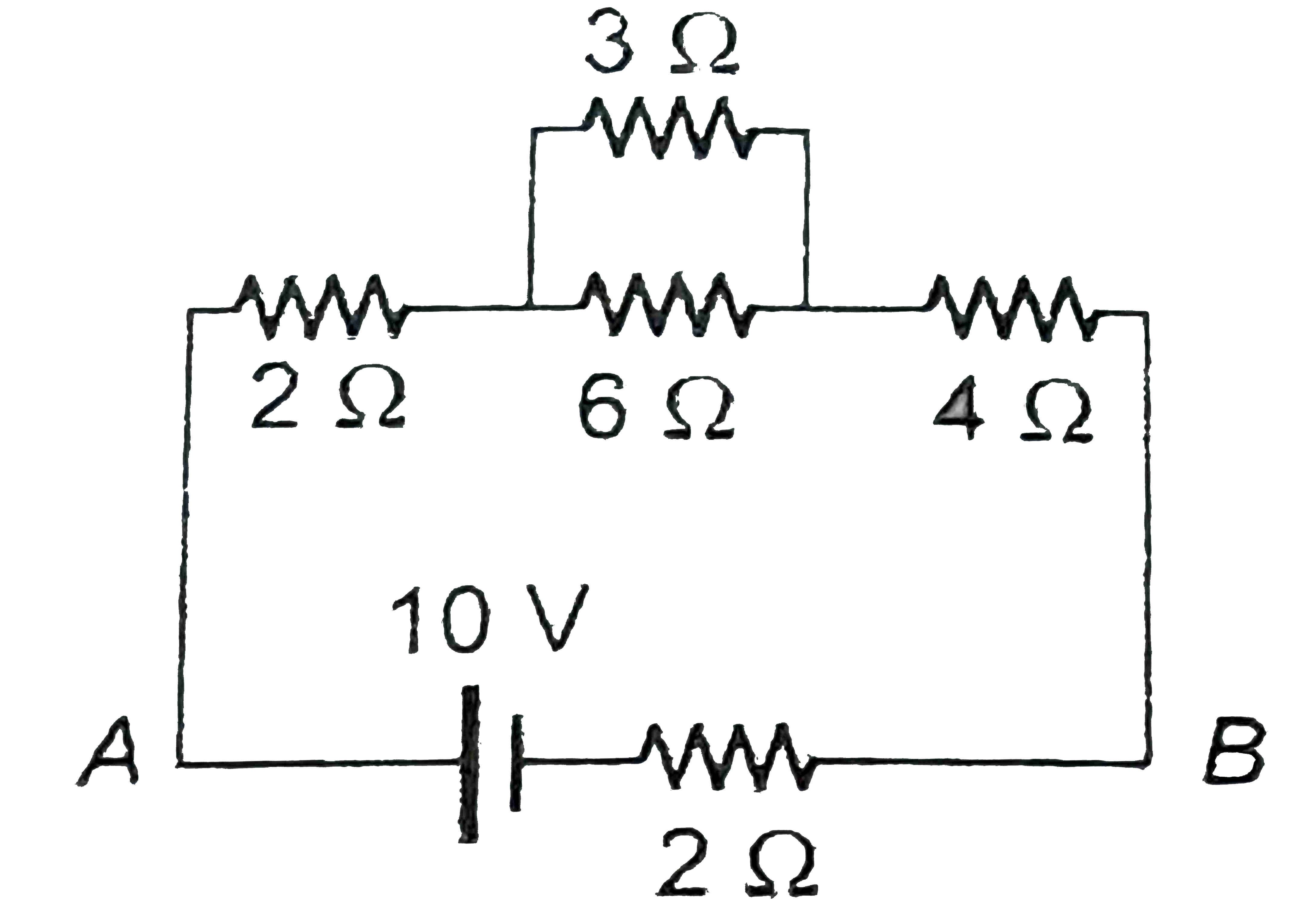
(b) Calculate the current flowing in the circuit and the potential difference across terminals of each cell.

( c) Calculate the potential difference across terminals of each cell.
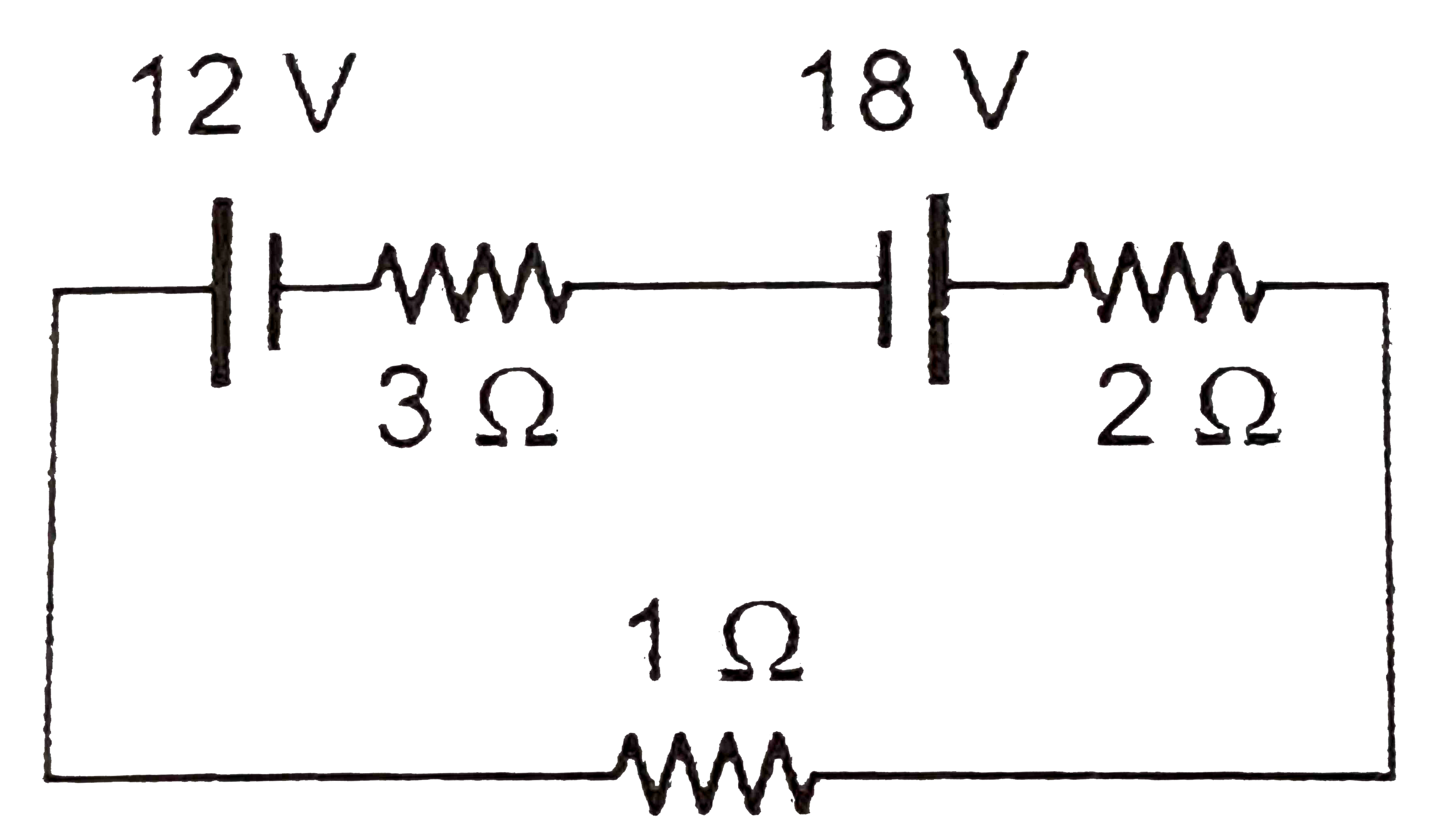
(d) Calculate the potential difference between `A` and `B`
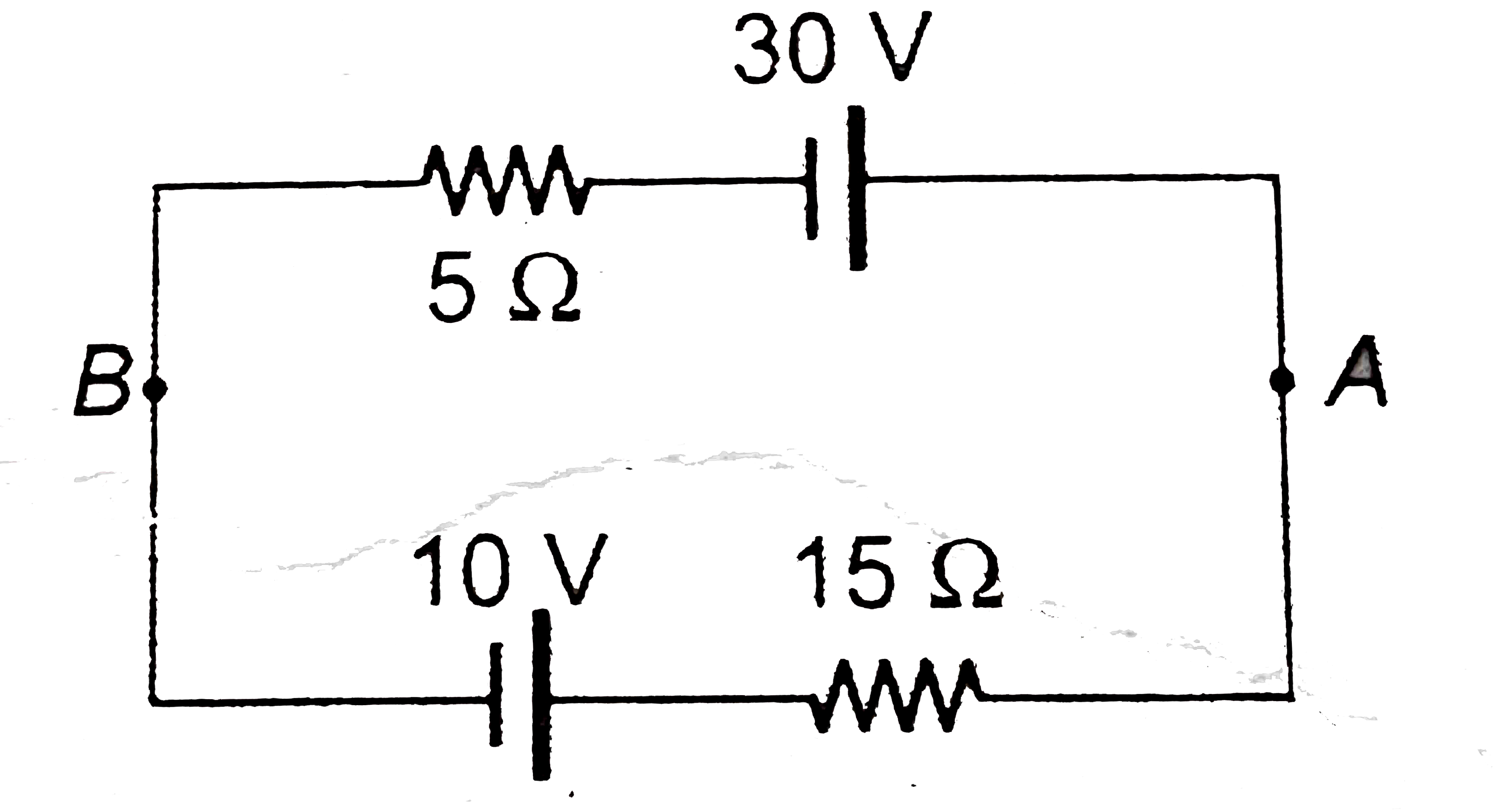
( e) Calculate the current in each resistor and terminal potential difference across each cell.

(f) Calculate potential difference across each cell.

(g) A battery of `6` cells each of emf `2 V` and internal resistance `0.5 Omega` is being changed by `DC` mains of emf `220 V` by using an external resistance of `10 Omega`. Calculate.
(i) the charging current
(ii) the potential difference across the battery.
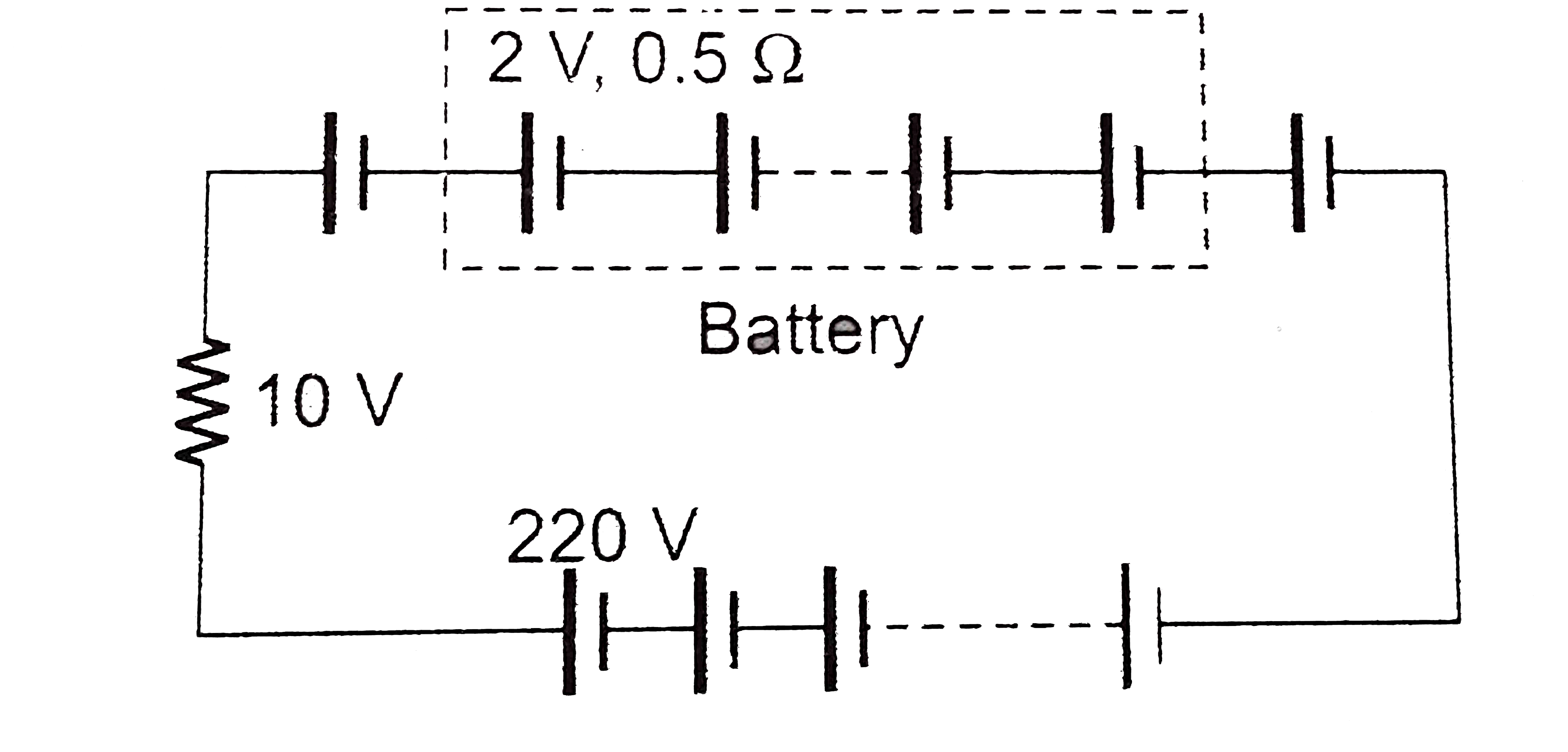 .View Solution
.View Solution(a) Find the potential difference between `A` and `B`

(b) A circuit has a section `AB` as shown. If `V_A - V_B = 12 V`, find current `i`.

( c) (i) Find the potential difference between the points `A` and `B`
(ii) Find current through `25 V` cell if points `A` and `B` are connected.
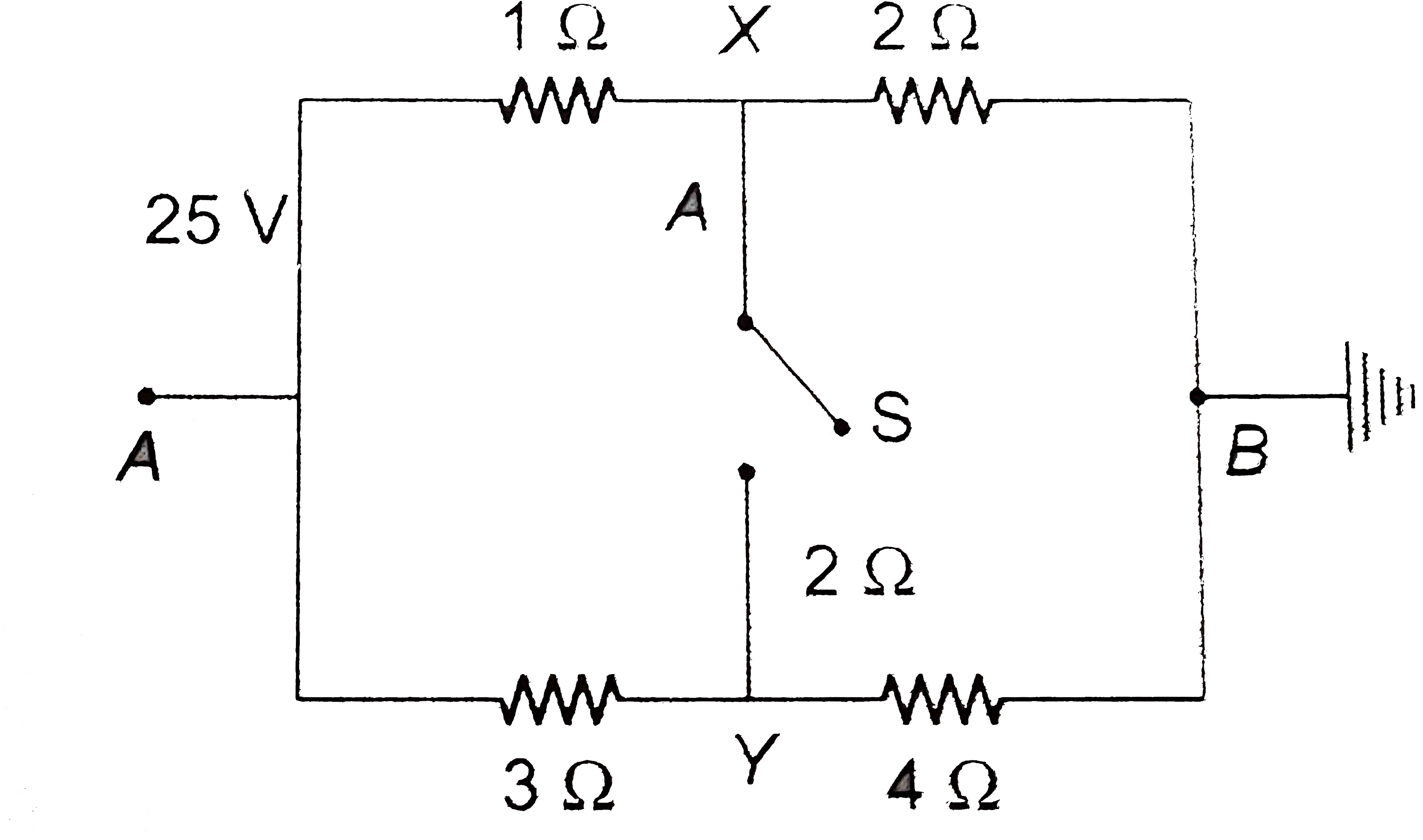
(d) In the following circuit, calculate
(i) Potential difference between points `X` and `Y`, when switch `S` is open.
(ii) Current through switch `S`, when switch `S` is closed.
(iii) Equivalent resistance between `A` and `B`. `.15:19View Solution(a) Find the value of `i` and potential difference across each cell.
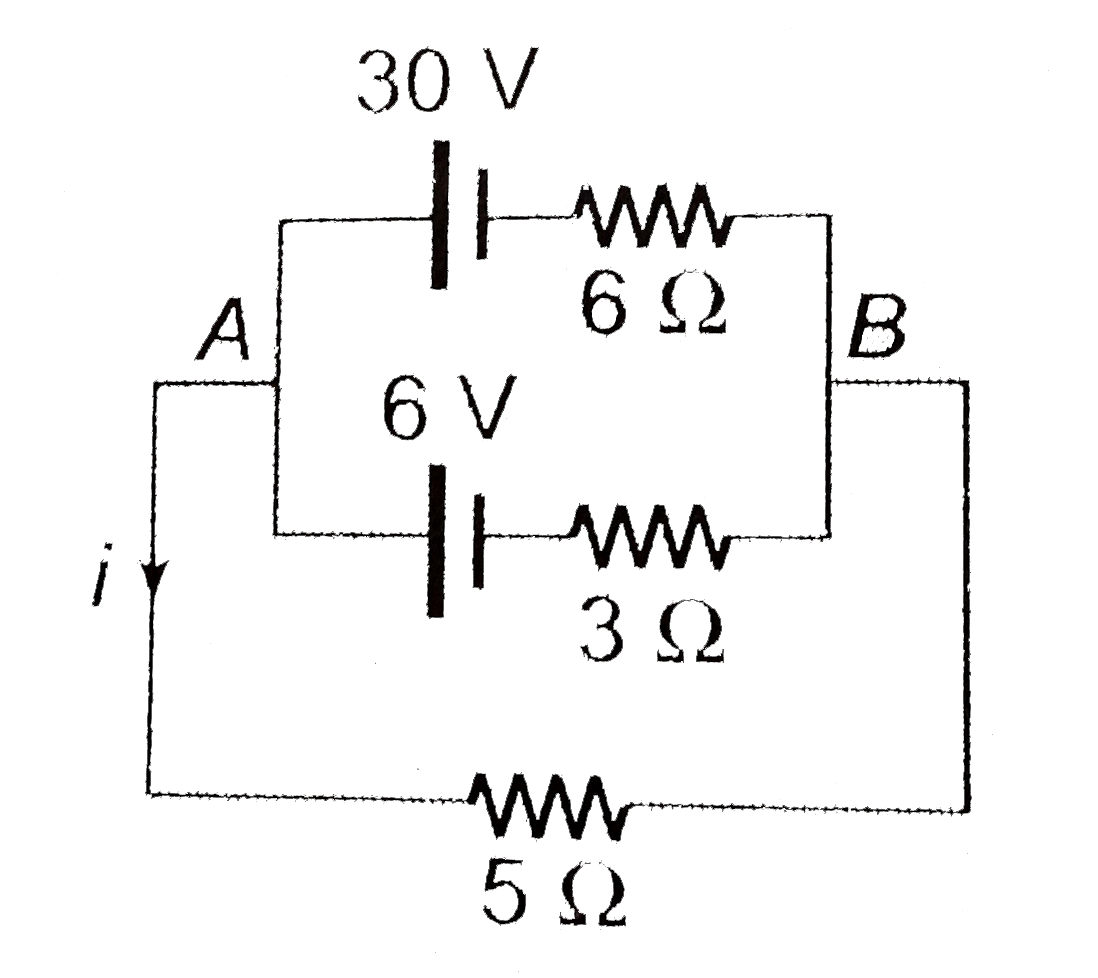
(b) Find potential difference between `A` and `B`.
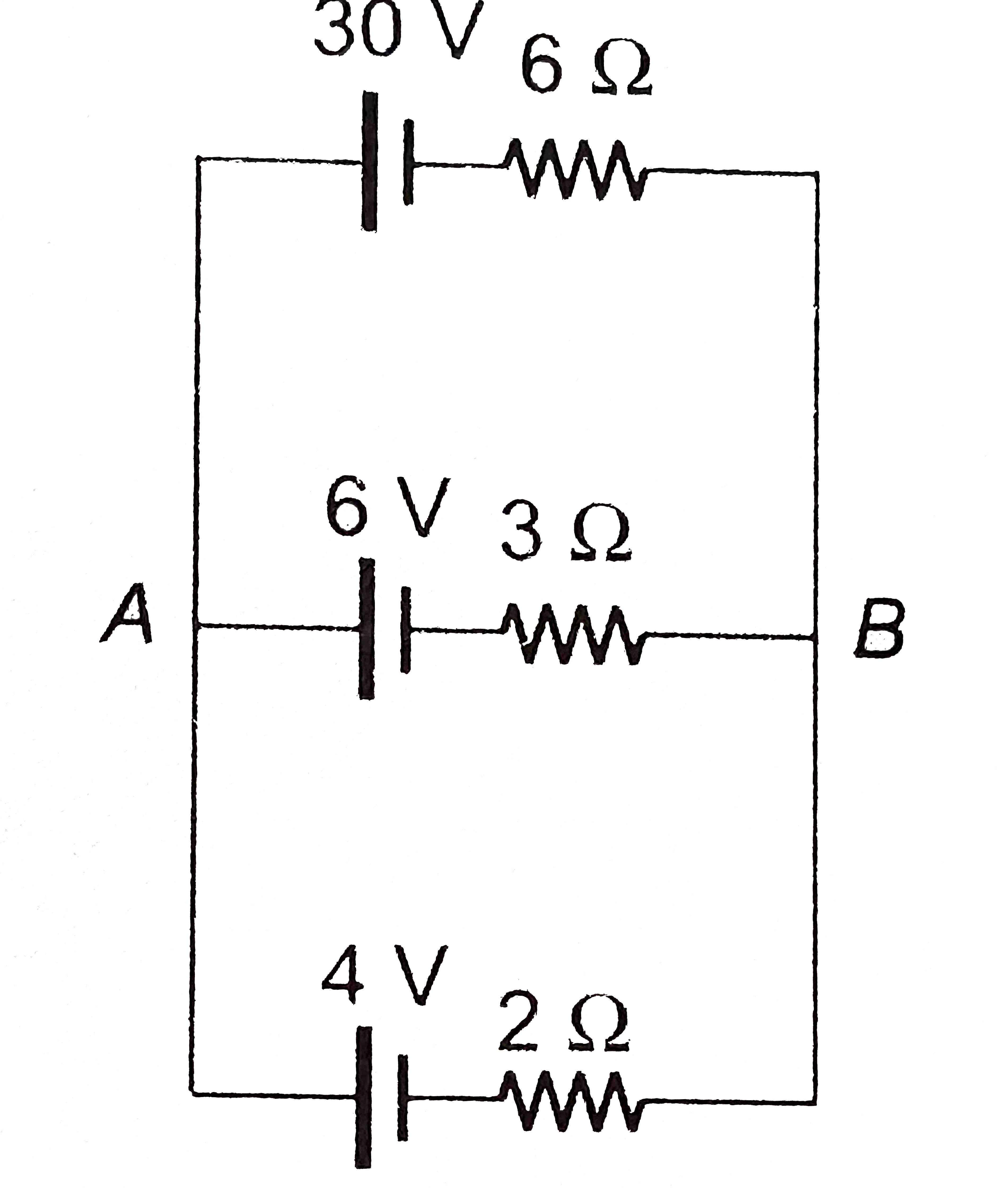
( c) In the given circuit,

find
(i) potential difference between terminals `10 V` cell
(ii) current through `25 V` cell
(iii) current through `5 Omega`
(d) Find the current through resistance `5 Omega`.
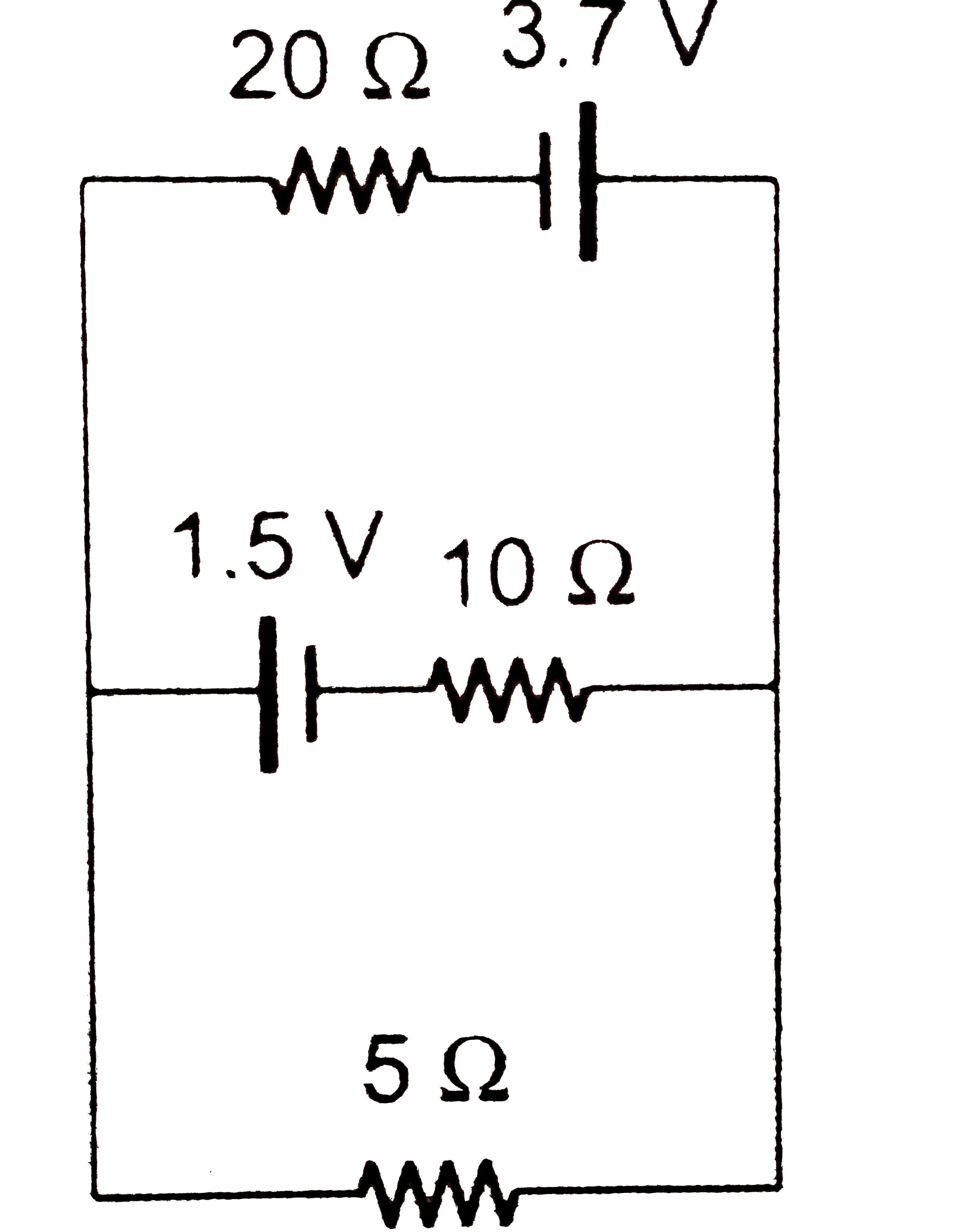 .11:00View Solution
.11:00View Solution(a) Find the current in `5 Omega` and voltage across `5 Omega`.
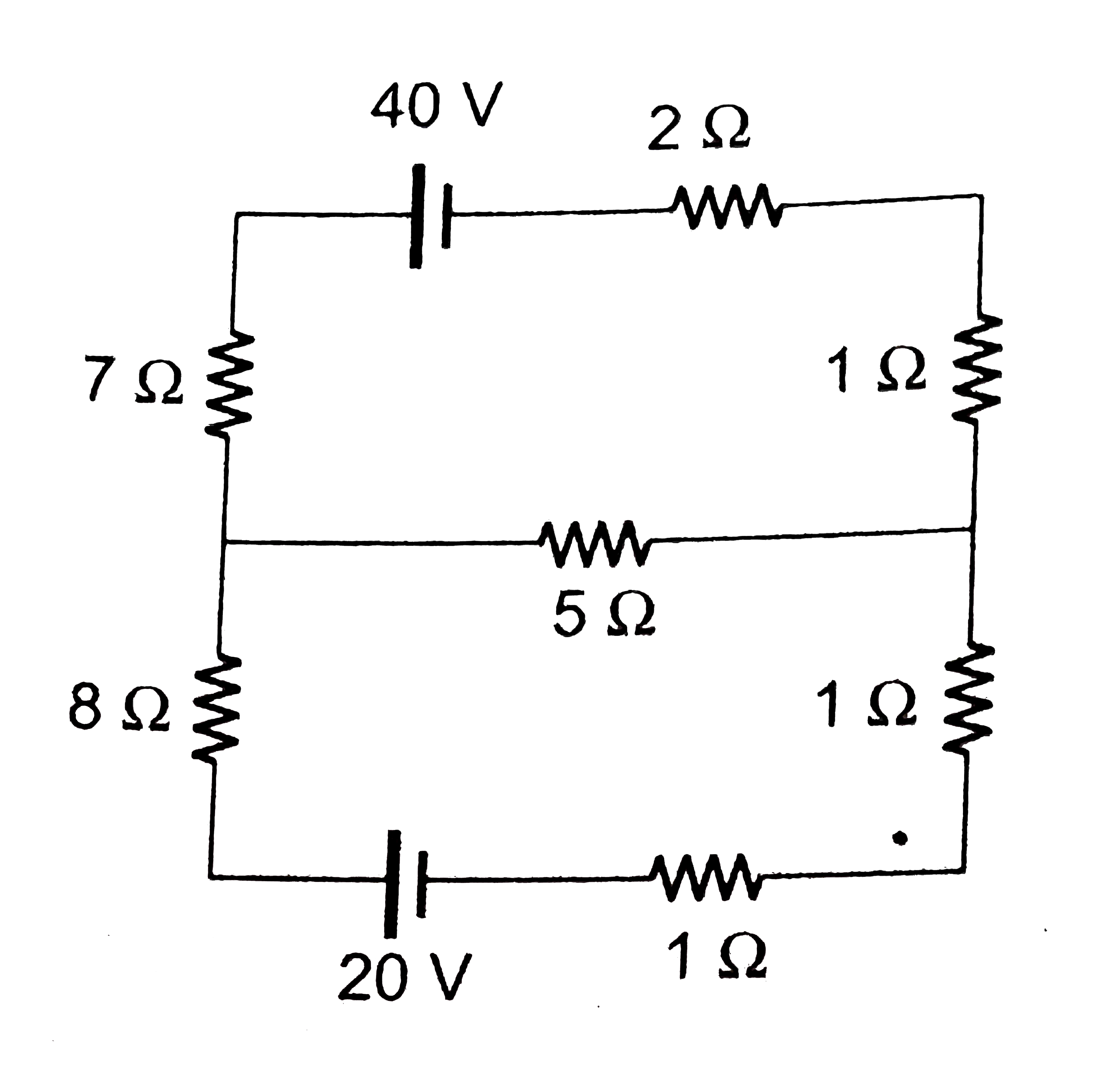
(b) Find the current in the `15 Omega` resistor.

( c) Calculate the potential difference between `A` and `B`.

(d) Find the current flowing in `10 Omega` and the potential difference between `A` and `B` .
 .12:02View Solution
.12:02View Solution(a) In the circuit shown, calculate
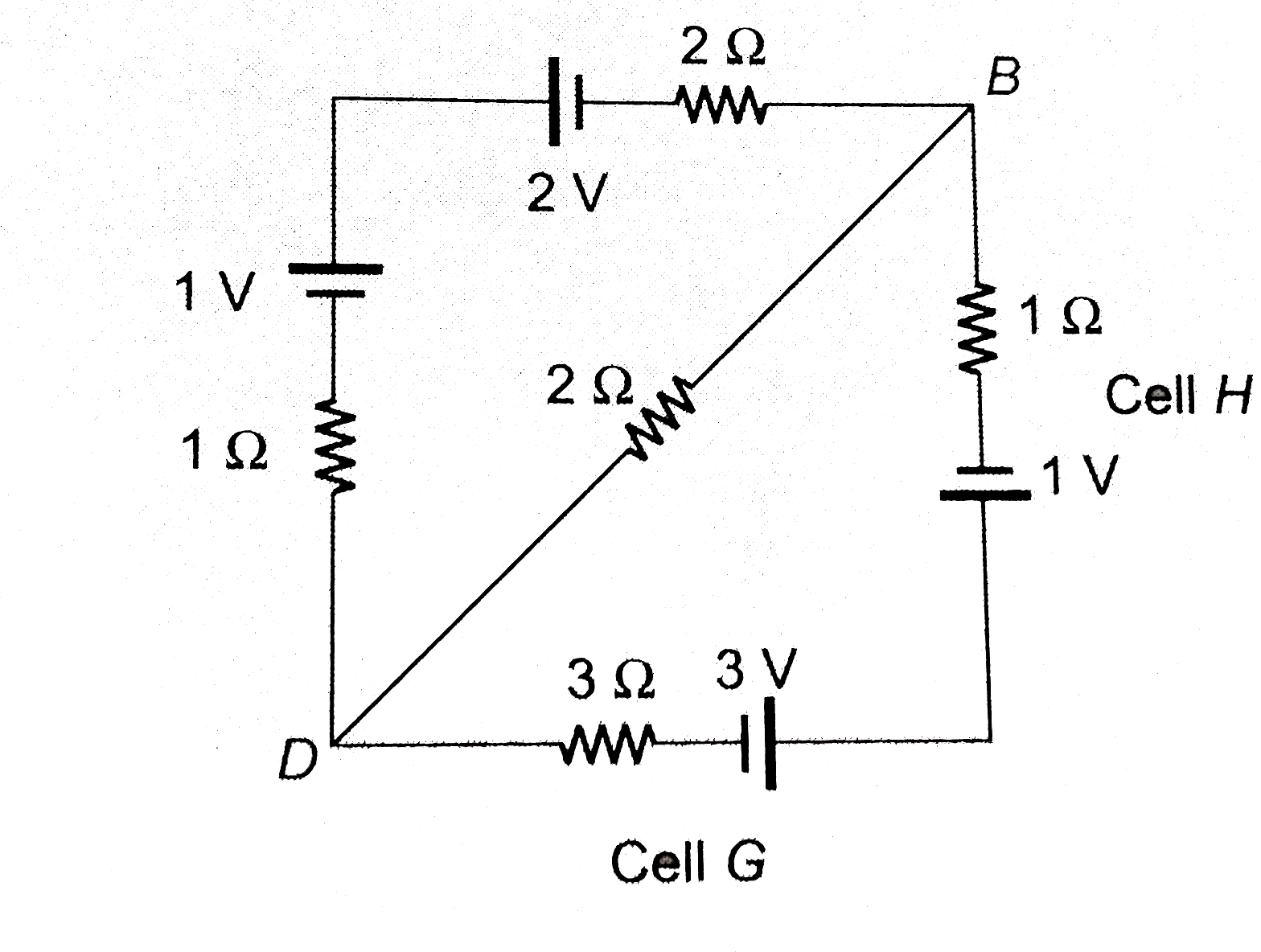
(i) the `p.d.` between `B` and `D`
(ii) the `p.d.` across the terminals of each of the cells `G` and `H`.
(b) Find the potentials of `A, B, C` and `D` and current through `1 Omega` and `2 Omega` resistance.
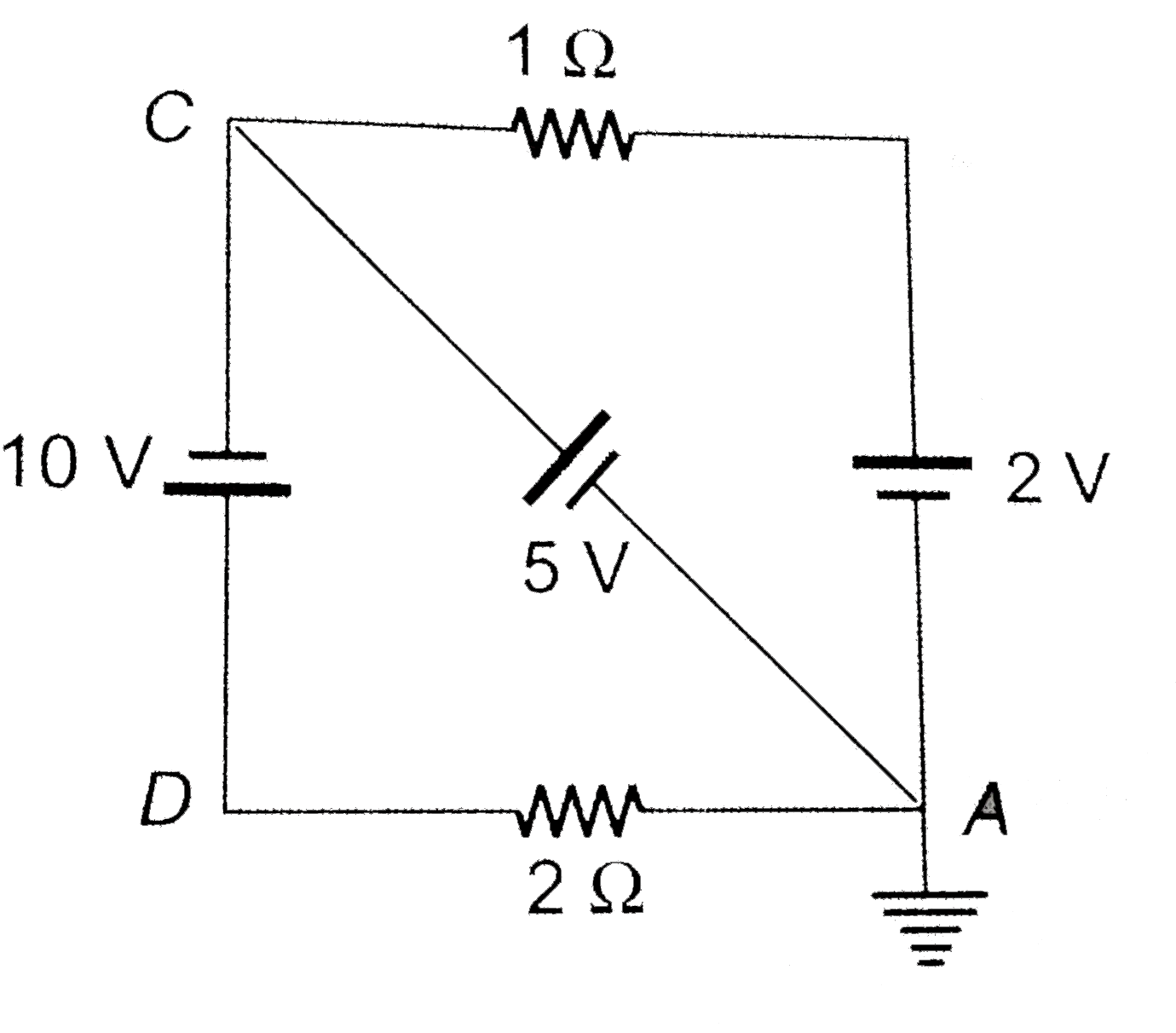 .10:02View Solution
.10:02View SolutionIn the circuit shown in fig `E_1 = 3 volts, E_2 = 2volts, E_3 = 1volt and R = r_1 = r_2= r_3= 1 ohm.`
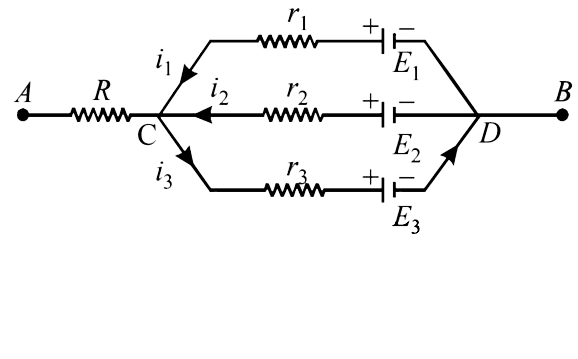
(i) Find the potential difference between the points A and B and the currents through each branch.
(ii) If `r_2` is short circuited and the point A is connected to point B, find the current through `E_1, E_2, E_3` and the resistor R.13:28View SolutionFind current through each cell.
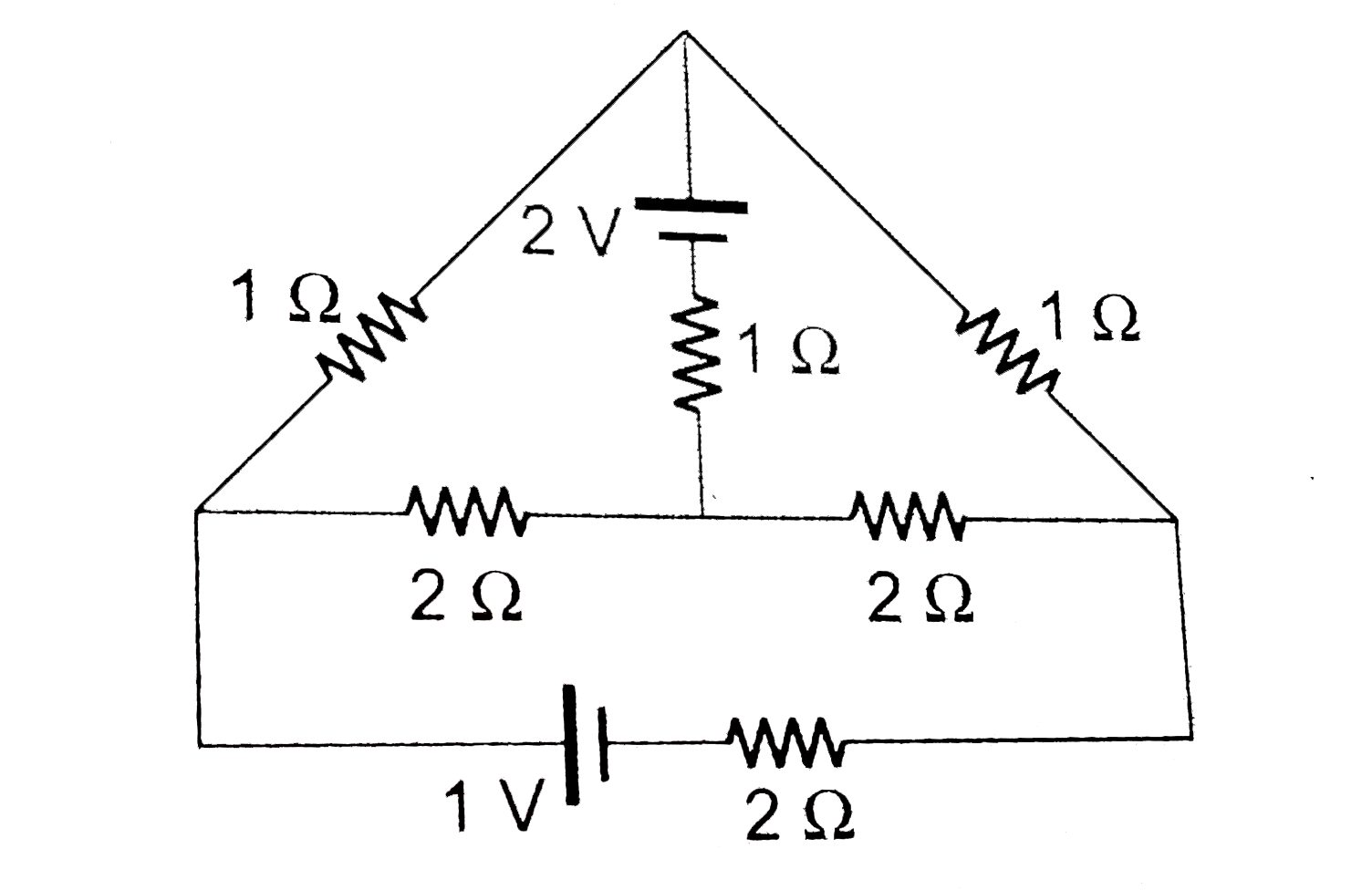 .05:38View Solution
.05:38View SolutionFind the equivalent resistance between the terminal points `A` and `B` in the network shown in the figure.
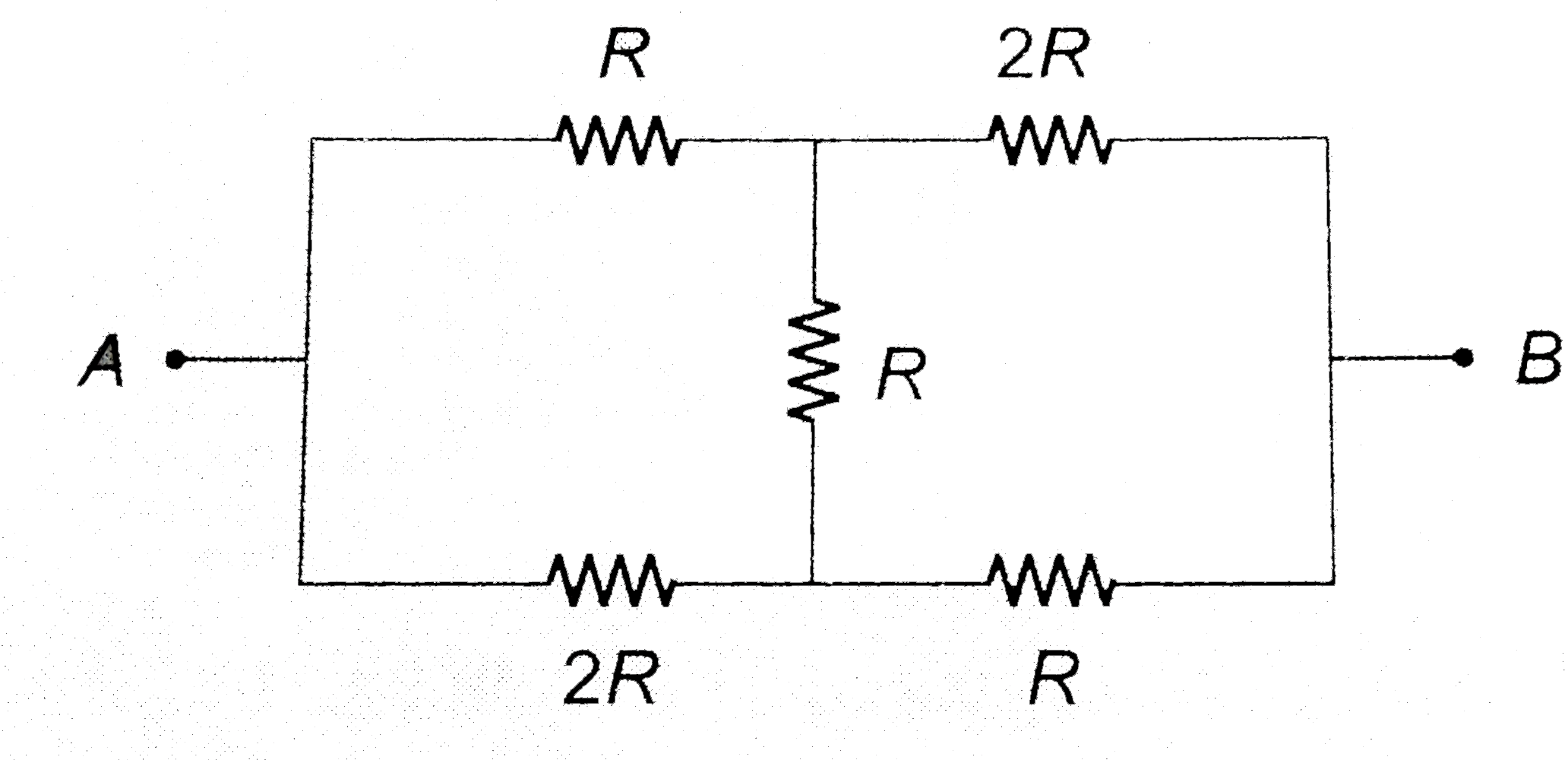 .05:30View Solution
.05:30View SolutionFind the magnitude and direction of current flowing through the segment `CD` of the circuit shown in the figure.
 .03:18View Solution
.03:18View SolutionFind the equivalent resistance between the points `A` and `B`.
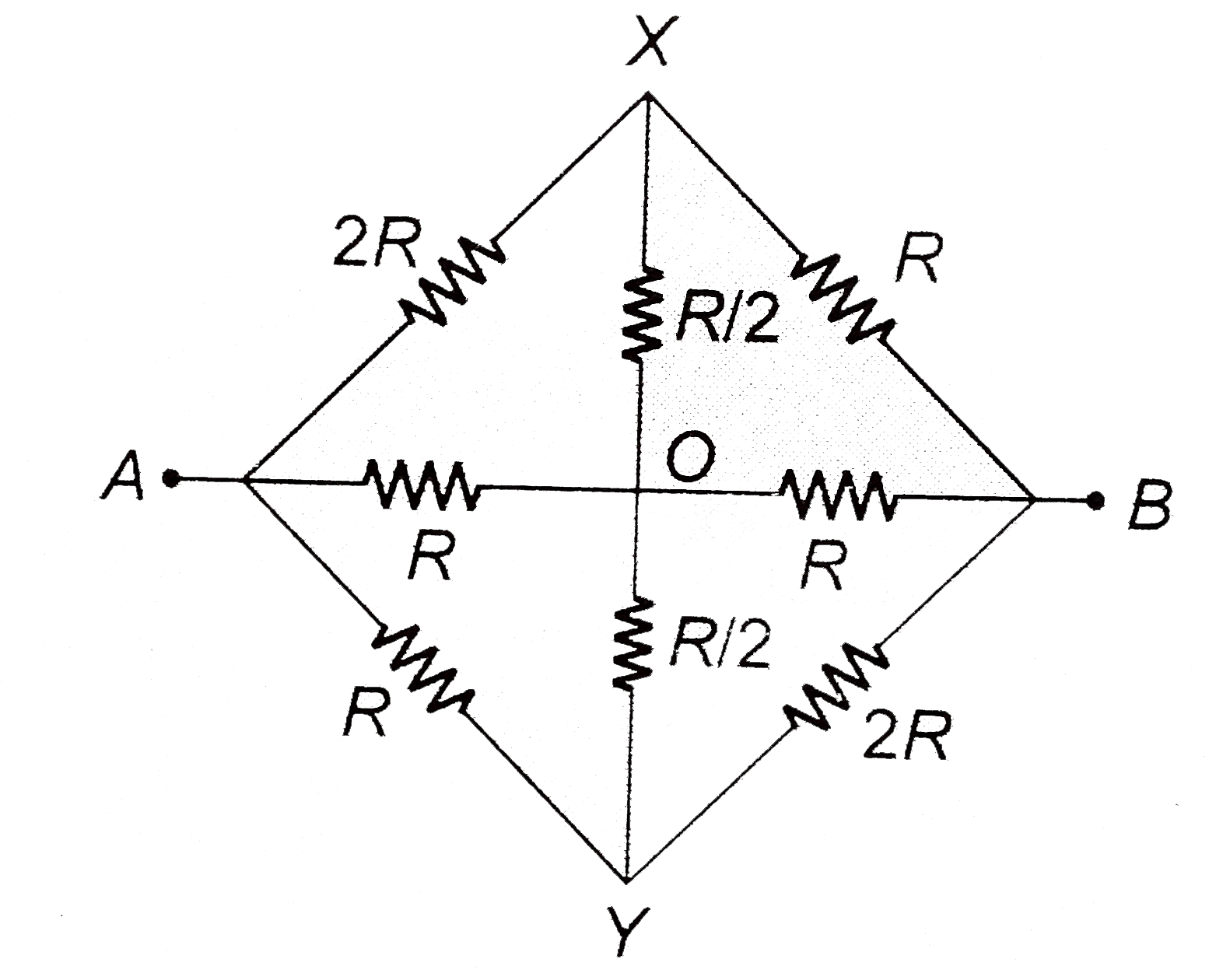 .03:42View Solution
.03:42View SolutionFind the the equivalent resistance between points `A` and `B`.
 03:06View Solution
03:06View SolutionFind the equivalent resistance between
(a) `A` and `B` and
(b) `A` and `C`.
 .06:57View Solution
.06:57View SolutionFind the potential difference between the points `A` and `B`.
(a)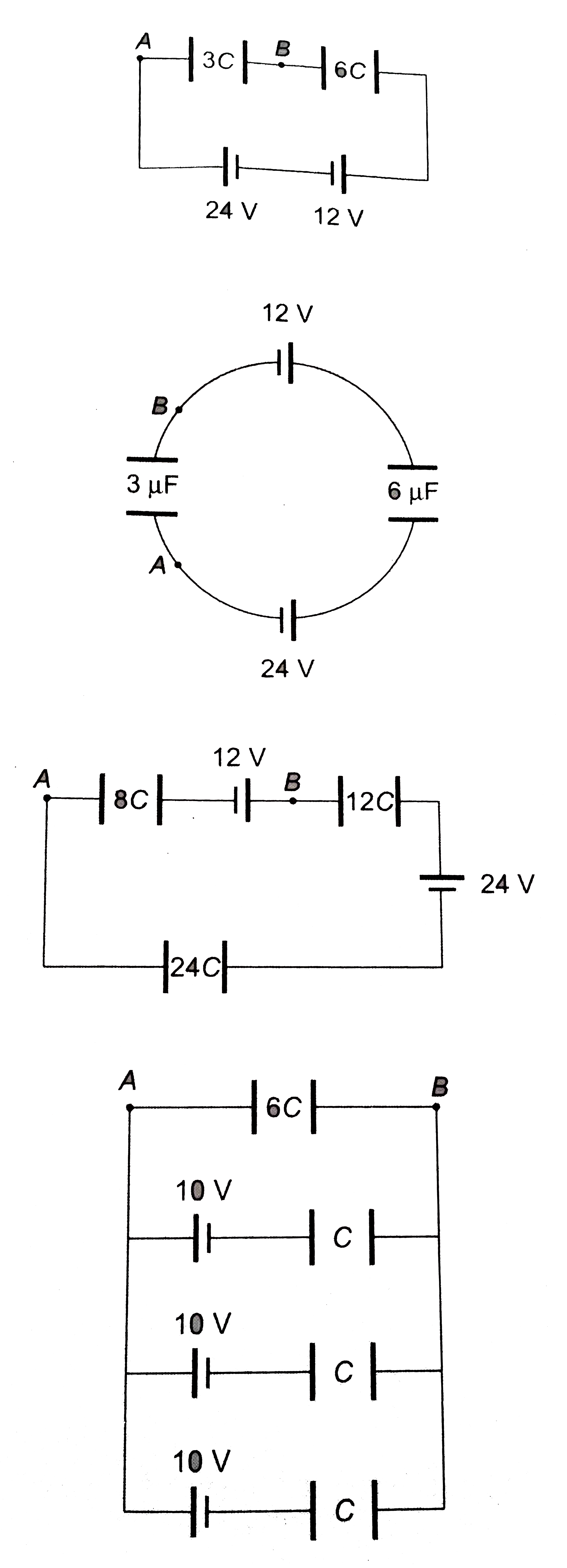
If `V_A - V_B = 5 V`, find voltage across each capacitor.
 09:54View Solution
09:54View SolutionFind the charge on the three capacitors shown in figure.
(a)
(b) View Solution
View SolutionFind the equivalent capacitance between `A` and `B`
(a)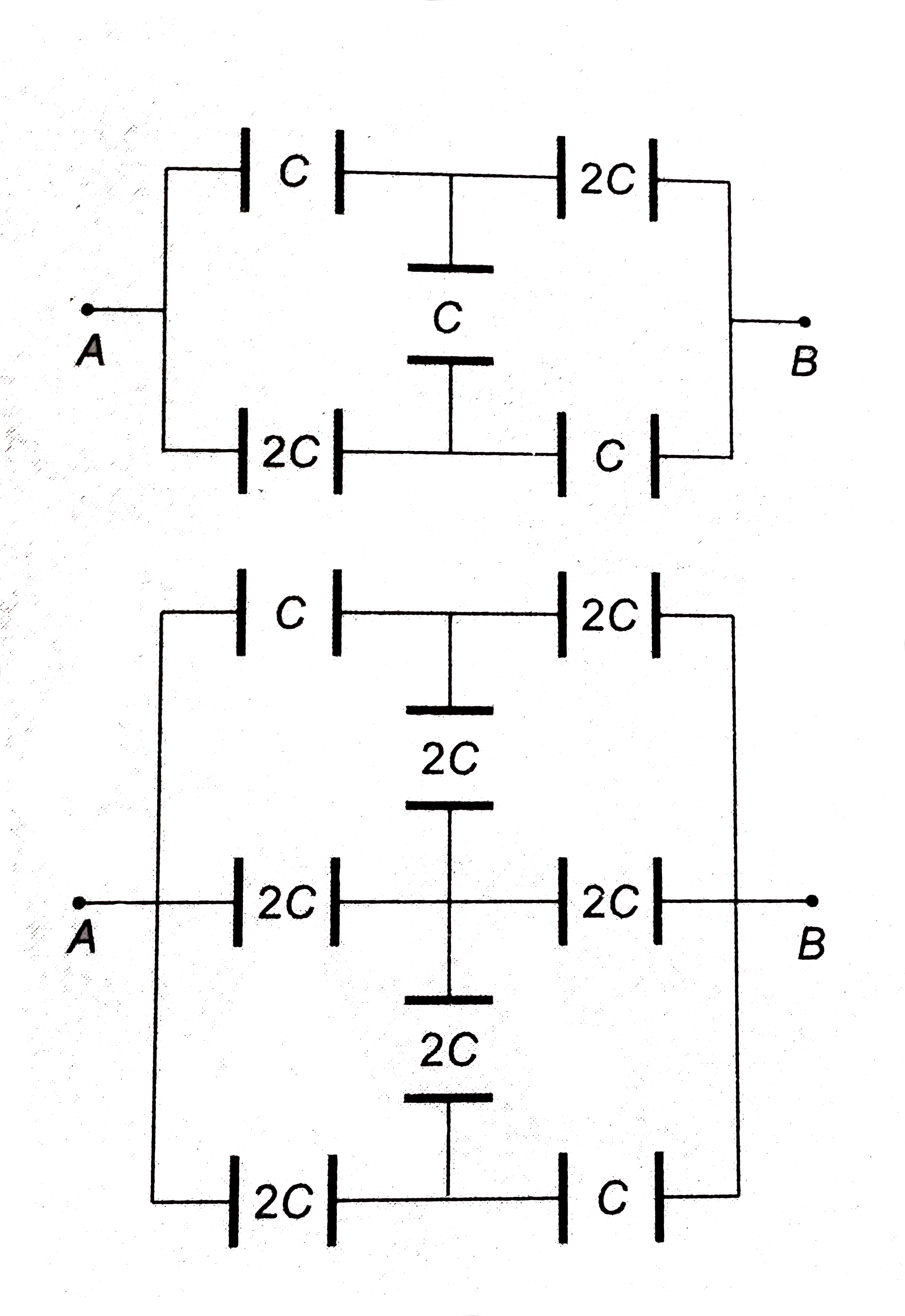
(b) .View Solution
.View SolutionThe connections shown in figure are established with the switch `S` open. How much charge will flow through the switch if it is closed ?
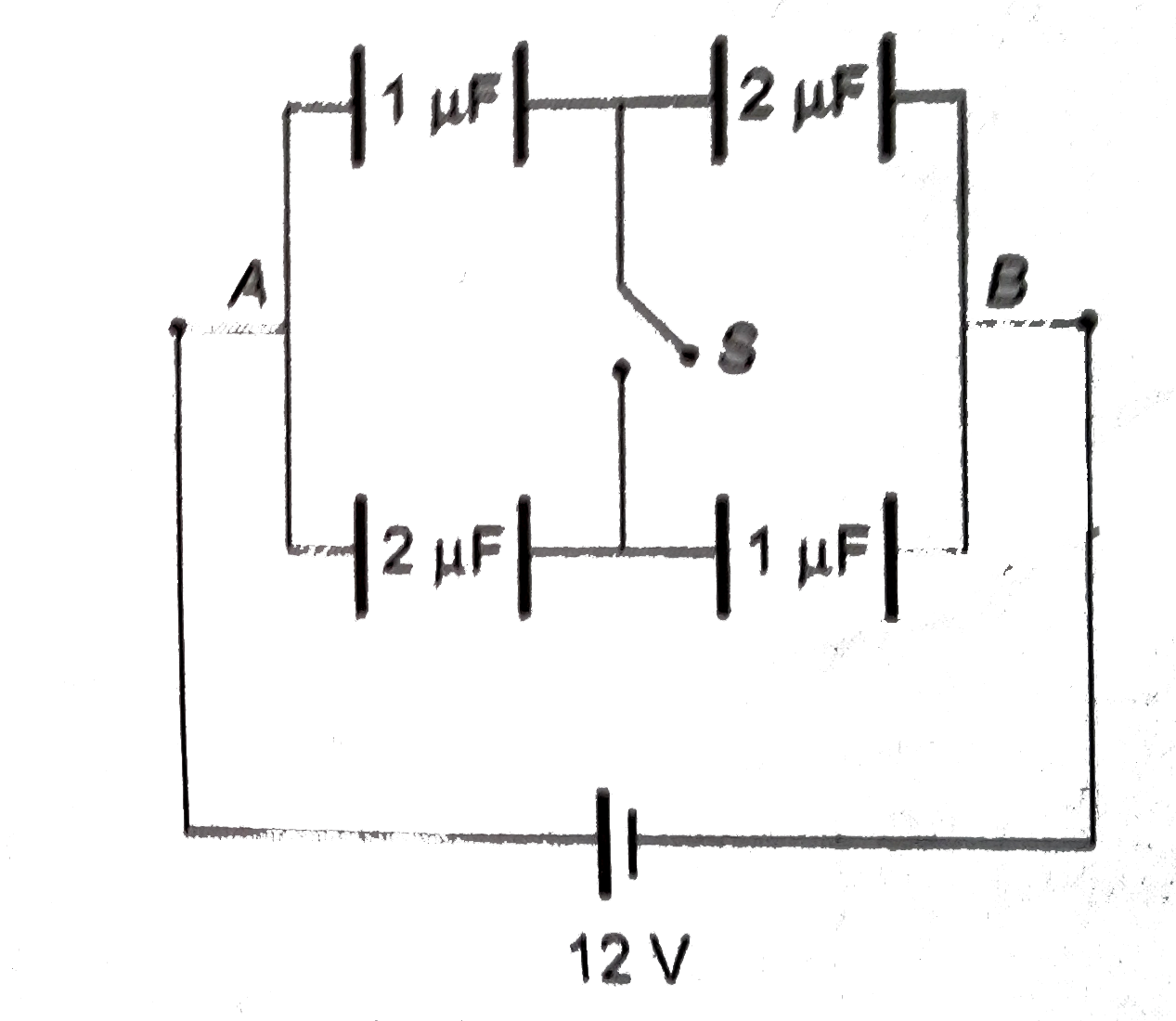 .06:11View Solution
.06:11View SolutionA galvanometer with a scale divided into `100` equal divisions has a current sensitivity of `10` divisions per mA and a voltage sensitivity of `2` divisions per mV. What adoptions are required to read (i) `5A` for full scale and (ii) 1 division per volt?
06:53View SolutionA galvanometer gives full scale deflection with `0.006 A` current. By connecting it to a `4990Omega` resistance, it can be converted into a voltmeter of range `0.30 V`. If connected to a `(2n)/249 Omega` resistance, it becomes an ammeter of range `0-1.5A`. the value of `n` is
05:37View Solution(a) A cell of emf `3.4 V` and internal resistance `3 Omega` is connected to an ammeter having resistance `2 Omega` and to an external resistance `100 Omega`. When a voltmeter is connected across the `100 Omega` resistance the ammeter reading is `0.04 A`. Find the voltage read by the voltmeter and its resistance. Had the voltmeter been an ideal one, what would have its reading ?
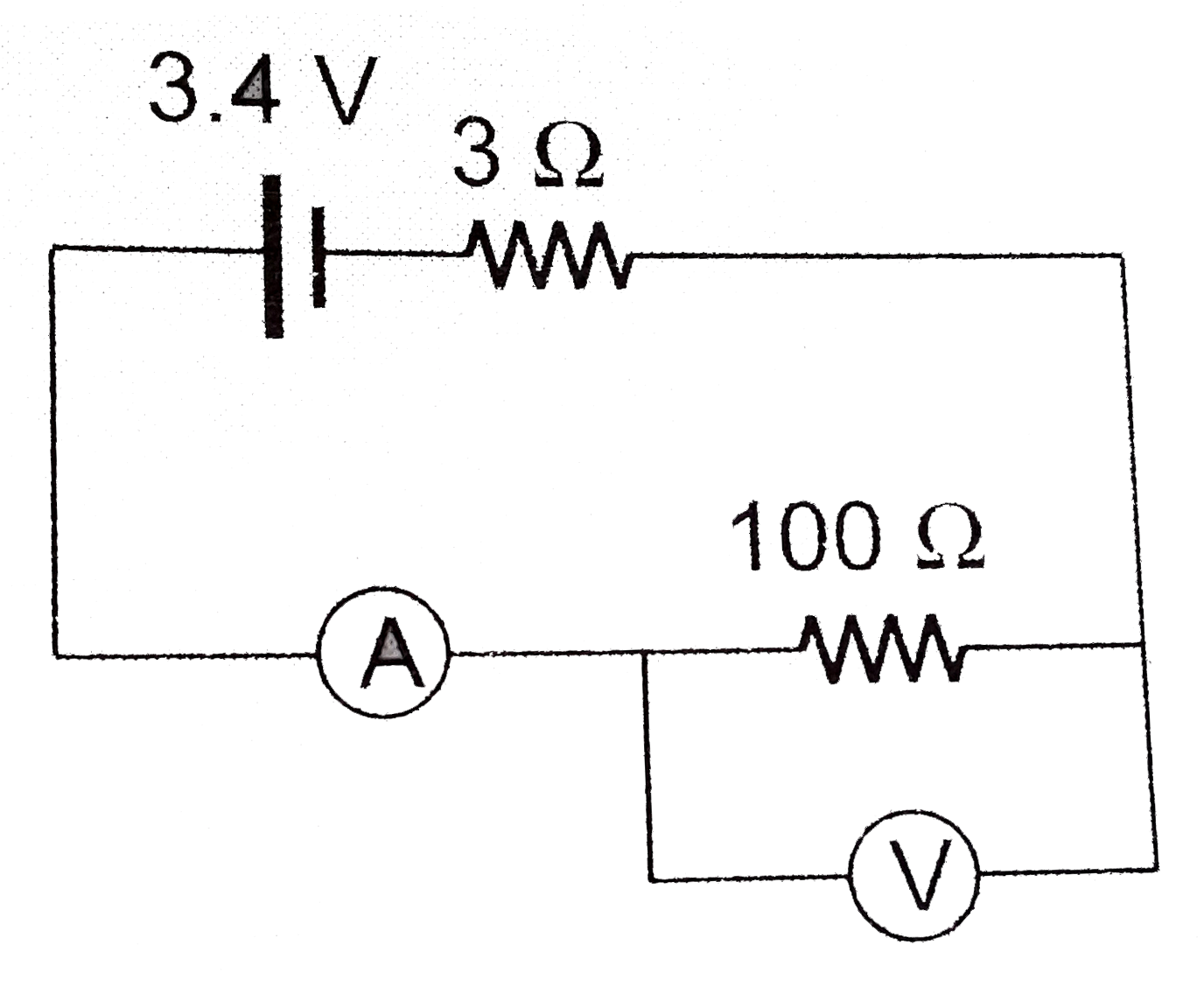
(b) Two resistances of `100 Omega` and `200 Omega` are connected in series with battery of emf `4 V` and negligible internal resistance. A voltmeter of resistance `200 Omega` is used to measure voltemeter of resistances separately. Calculate the voltmeter indicated.
( c) In the circuit shown, a voltmeter reads `30 V` when it is connected across the `400 Omega` resistance. Calculate what the same voltmeter will read when it is connected across the `300 Omega` resistance ?

(d) An ammeter and a voltmeter are connected in series to a battery of emf `E = 6.0 V`. When a certain resistance is connected in parallel with the voltmeter. the reading of the ammeter is doubled. while voltmeter reading is reduced to half. Find the voltmeter reading after the connection of the resistance.View SolutionAn electrical circuit is shown in figure. Calculate the potential difference across the resistor of `400 Omega` as will be measured by the voltmeter Vof resistance `400 Omega` either by applying Kirchhoff's rules or otherwise.
 08:27View Solution
08:27View SolutionThe potentiometer wire `AB` shown in figure is `40 cm` long. Where the free end of the galvanometer should be connected on `AB` so that the galvanometer may show zero deflection?
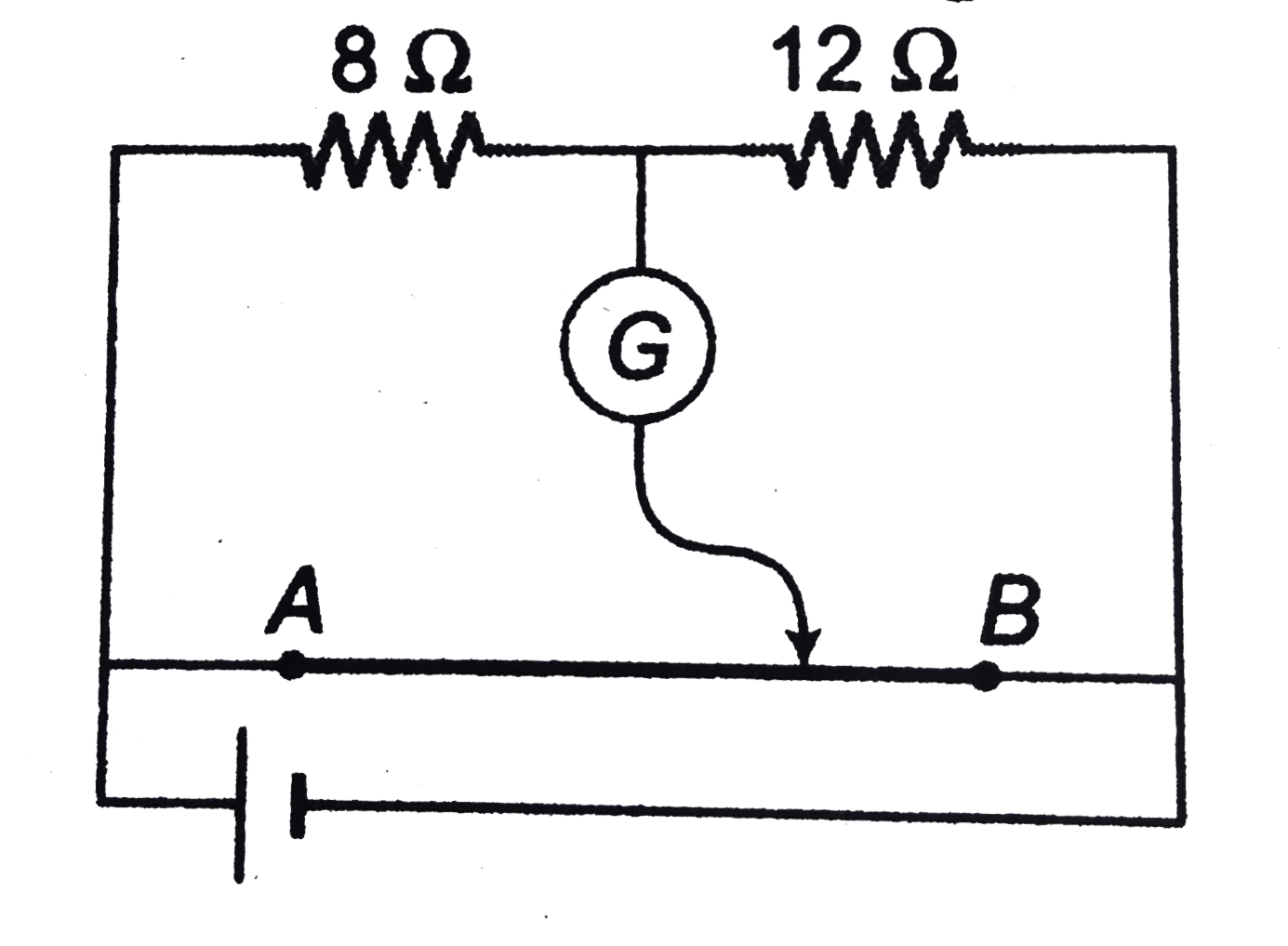 02:13View Solution
02:13View SolutionThe potentiometer wire AB shown in figure is 50cm long.When AD=30cm, no deflection occurs in the galvanmeter.Find R.
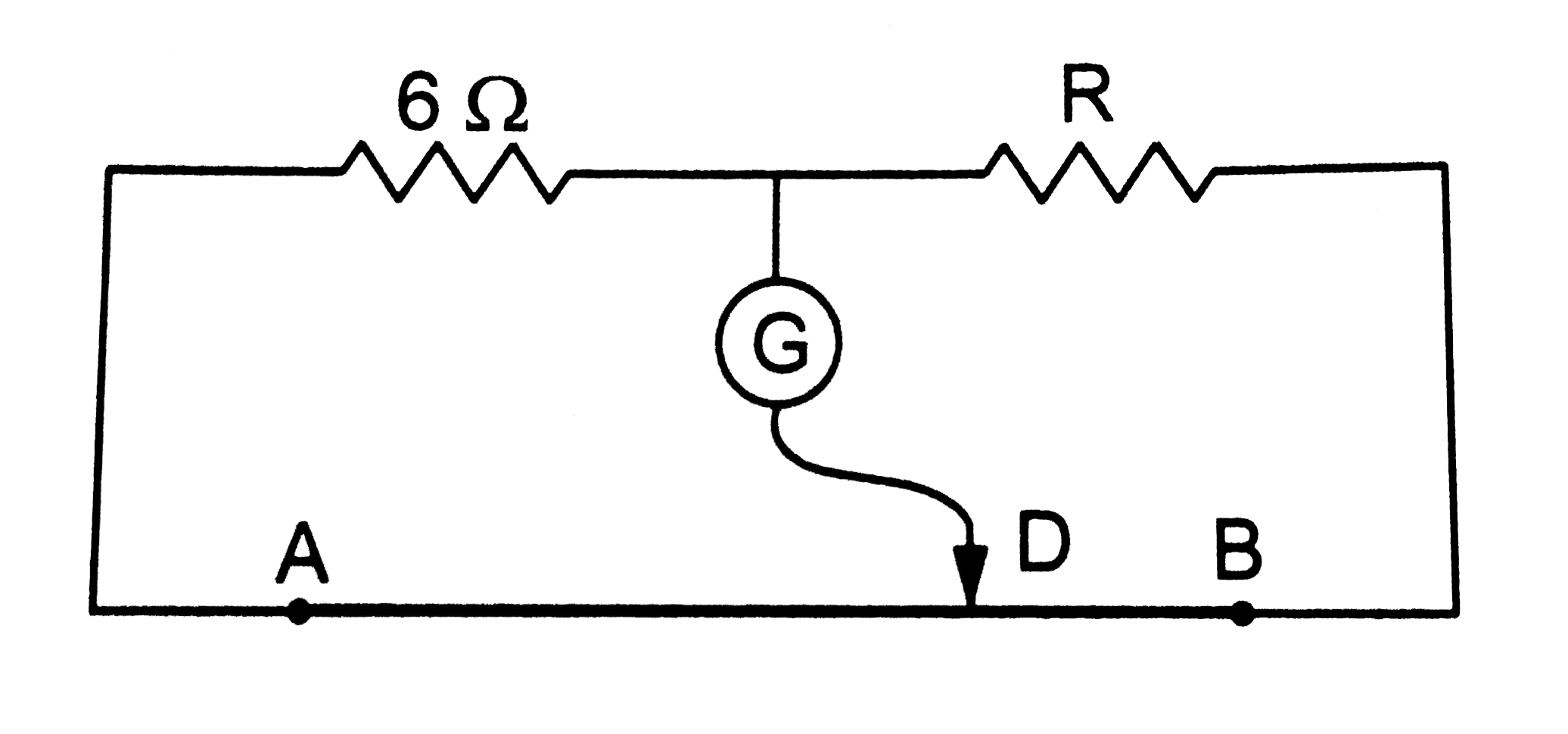 01:42View Solution
01:42View SolutionThe resistance in the two arms of the meter bridge are `5 Omega` and `R Omega`, respectively. When the resistance `R` is shunted with an equal resistance, the new balance point is `1.6 l_(1)`.
The resistance `R` is
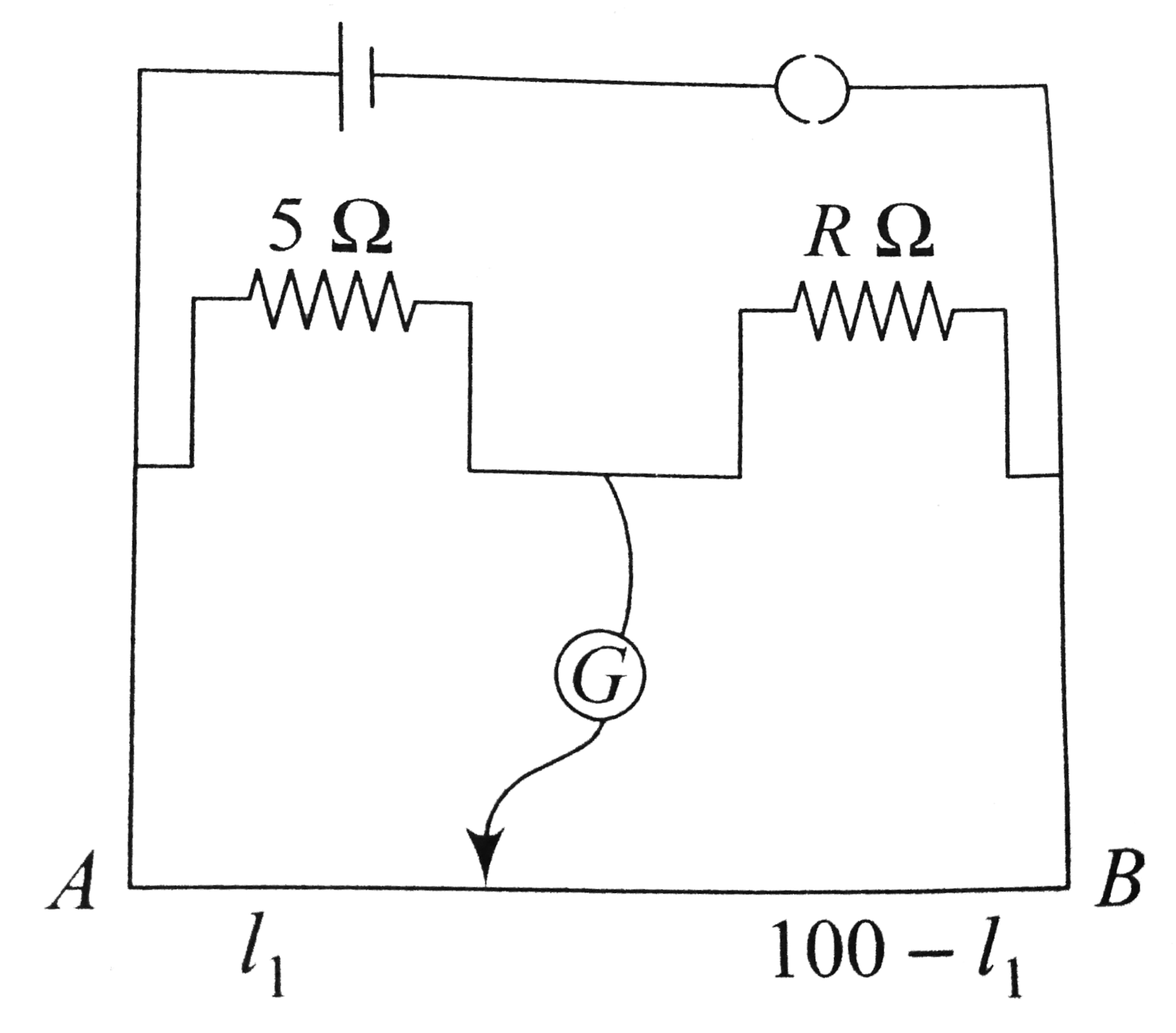 04:37View Solution
04:37View SolutionDuring an experiment with a metre bridge, the galvanometer shows a null point when the jockey is pressed at `40.0 cm` using a standard resistance of `90 Omega`, as shown in the figure. The least count of the scale used in the metre bridge is 1mm. The unknown resistance is
 07:21View Solution
07:21View SolutionAs shown in the figure, a meter bridge consisting of two resistances `P` and `Q` together in parallel with a meter-long wire `AB` of uniform cross-section. `C` is a movable contact that can slide along the wire `AB`. The resistors `P, Q` and resistances of segments `AC` and `CB` of the wire constitude the four arms of bridge. the length `AB = 100 cm, P = 4 Omega, Q` is a coil of wire. With `Q` immersed in melting ice the null point is found to be at a distance of `40 cm` from `A`. When the coil `Q` is heated to `100^@C`, a `100 Omega` resistor has to be connected in parallel with `Q` in order to keep the bridge balanced at teh same point. Calculate the temperature coefficient of resistance of the coil.
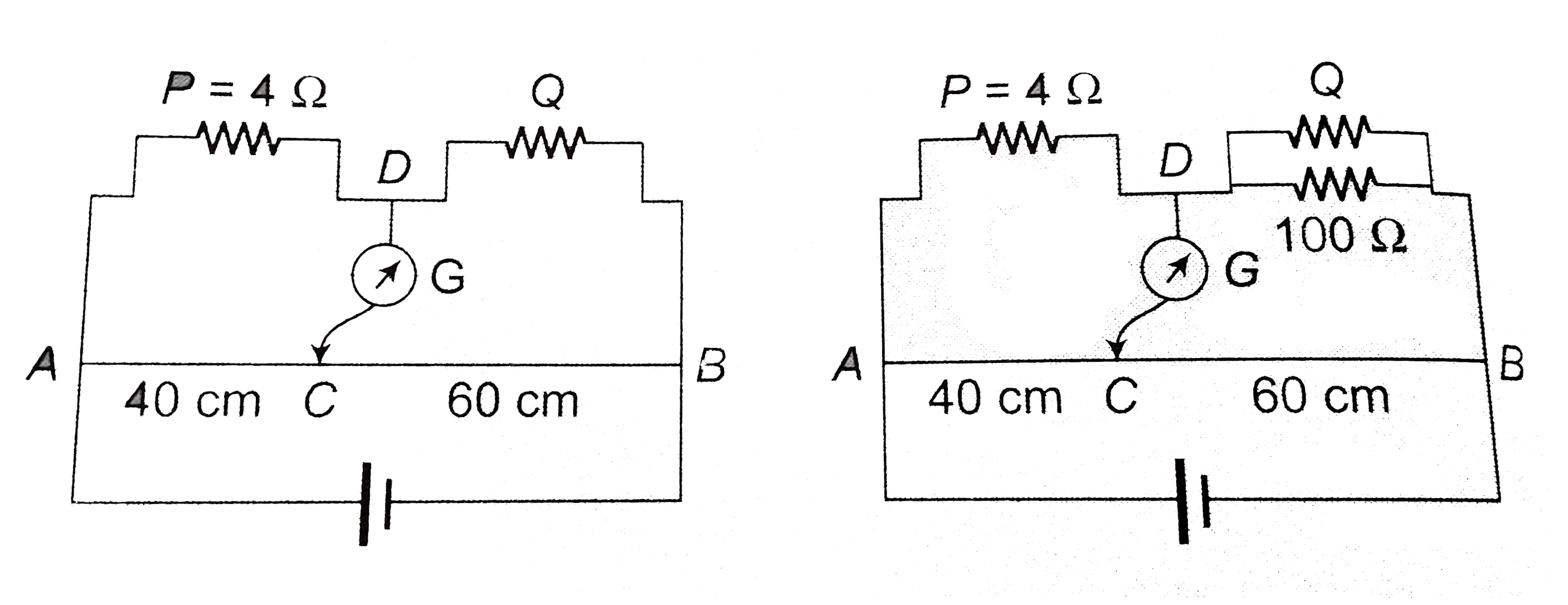 .05:26View Solution
.05:26View SolutionA thin uniform wire `AB` of length `1m`, an unknown resistance `X` and a resistance of `12 Omega` are connected by thick conducting strips, as shown in the figure. A battery and a galvanometer (with a sliding jockey connected to it) area also available. Connections are to be made to measure the unknown resistance `X` using the principle of Wheatstone bridge. Answer the following questions.

(a) Are there positive and negative terminals on the galvanometer ?
(b) Copy the figure in your answer book and show the battery and the galvanometer (with jockey) connected at apalphariate points.
( c) After apalphariate connections are made, it is found that no deflection takes place in the galvanometer when the sliding jockey touches the wire at a distance of `60 cm` from `A`. Obtain the value of the resistance `X`.04:45View SolutionThe galvanometer shown in the diagram has resistance `100 Omega` and current required for full-scale deflection is `10 mA`. Find the resistances `R_1, R_2` and `R_3` required to convert it into ammeter having ranges as indicated.
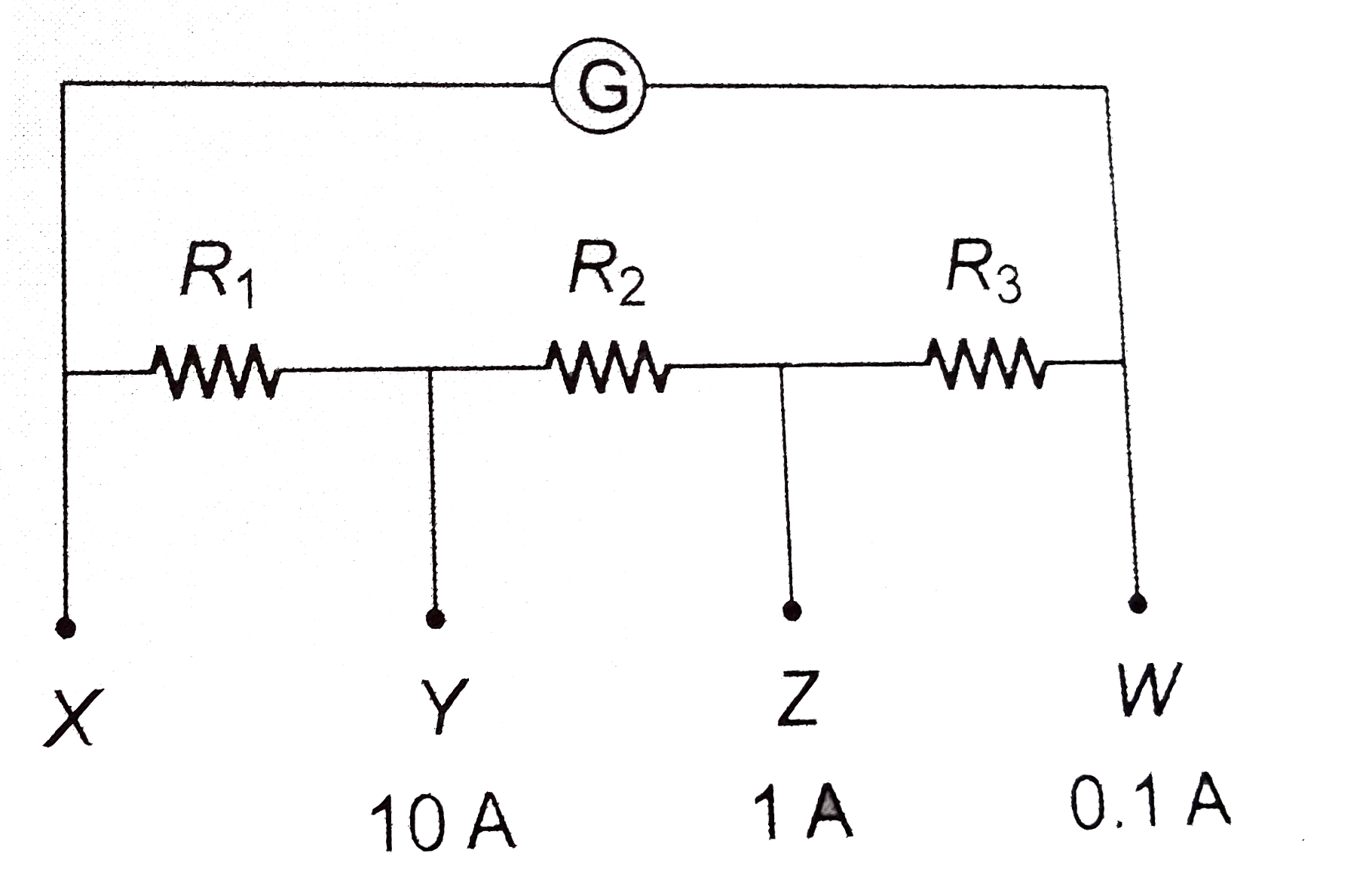 .09:14View Solution
.09:14View SolutionA 6 volt battery of negligible internal resistance is connected across a potentiometer wire is AB of length 100 cm and uniform area of cross-section. The posistive terminal of another battery of emf 4 V and internal resistance `1 Omega` is joined to the point A as shown in figure. If we take potential at B to be zero, (a) What are the potentials at points A and C. (b) At which point D of the potentiometer C? ( C) If the points C and D are connected by a wire, What will be the current through itgt (d) if the 4 V battery is replaced by 7.5 V battery, what would be the answers of parts (a) and (b)?
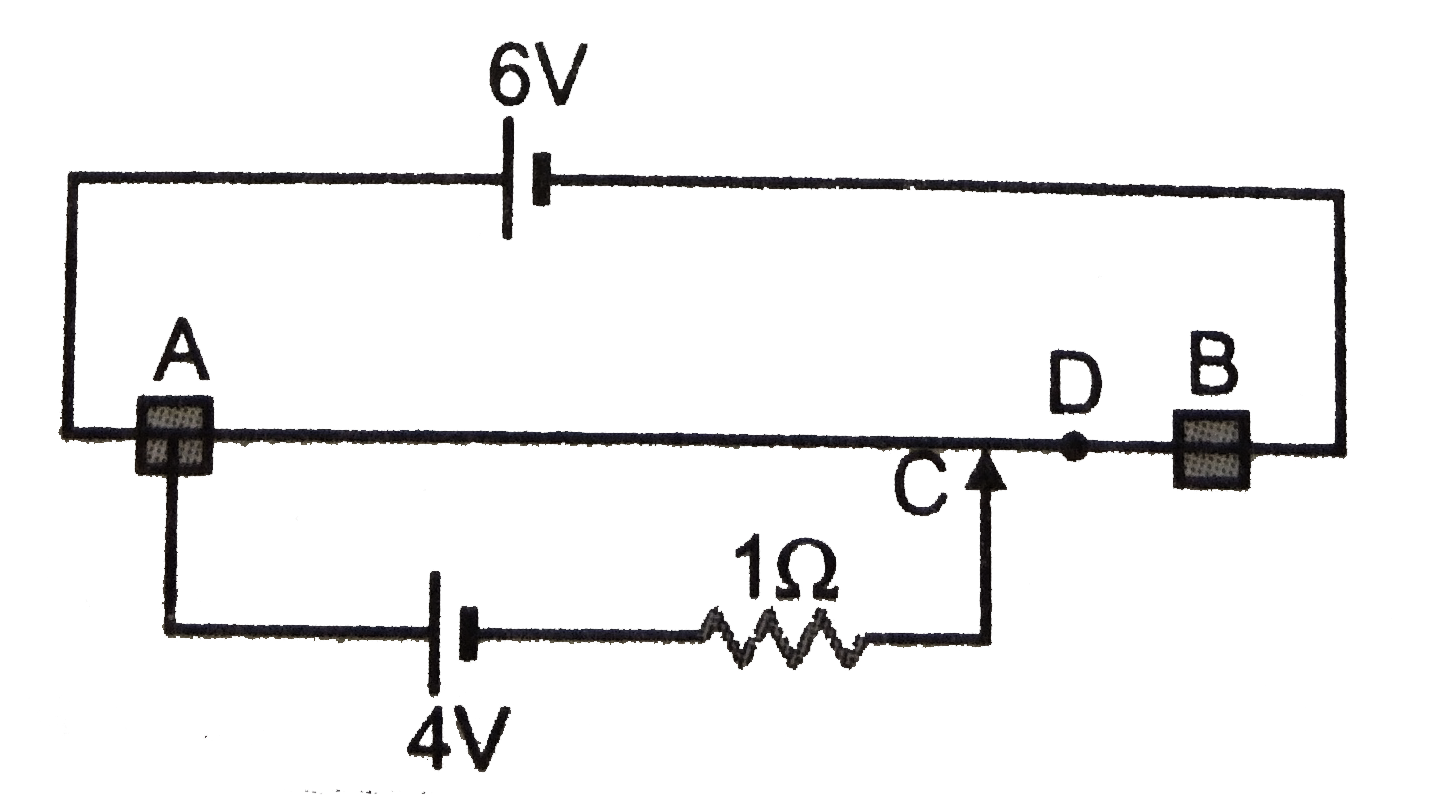 05:42View Solution
05:42View Solution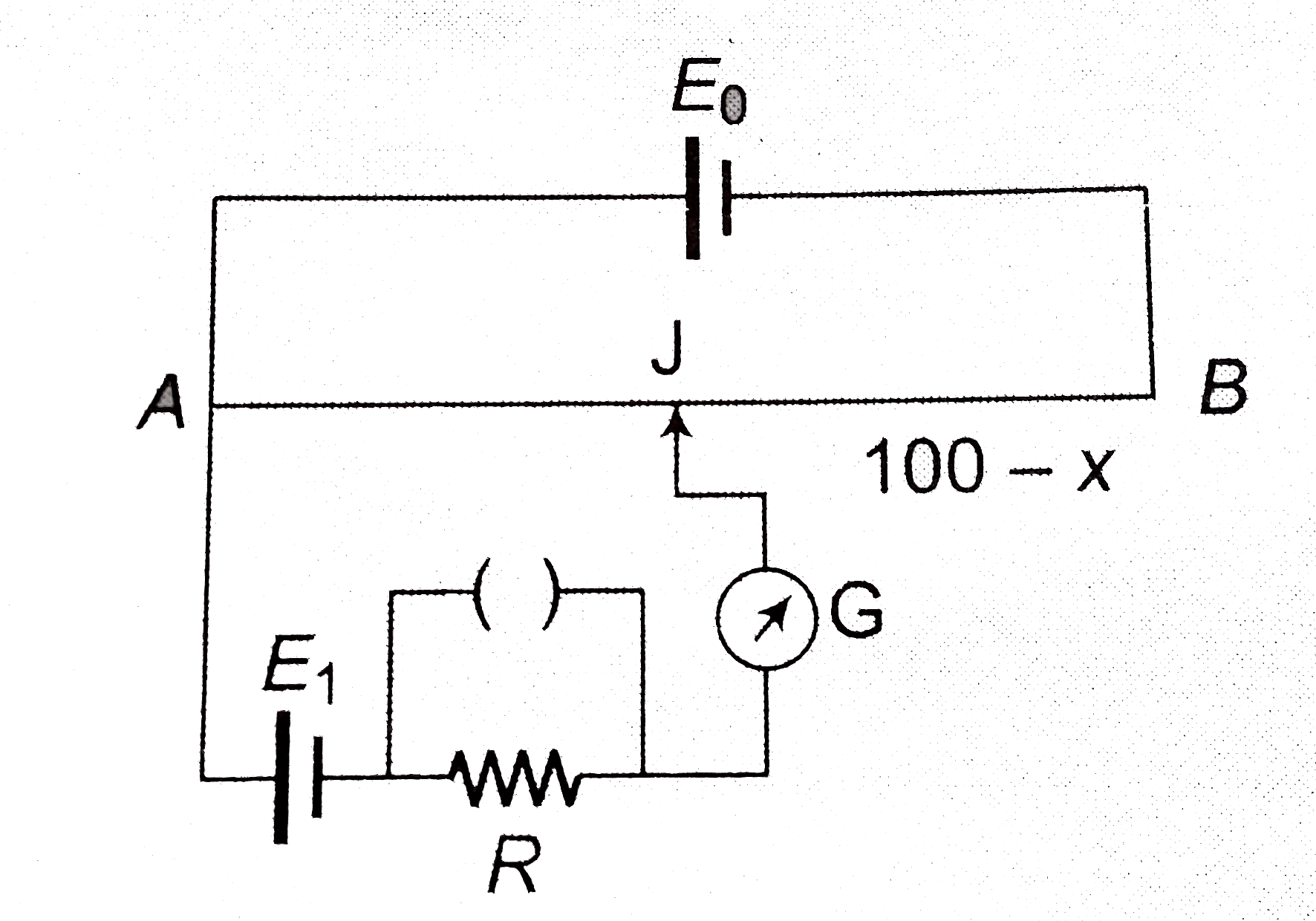
The figure shows a potentiometer using a cell `E` of emf `2.0 V` and internal resistance `0.40 Omega` connected to a resistor wire `AB`. A standard cell of constant emf of `1.02 V` gives a balance point a t `67.3 cm` length of the wire. A very high resistance `R = 100 k Omega` is put in with the standard cell. This resistance is shorted by inserting switch `S` when close to the balance point. The standard cell is then replaced by a cell of unknown emf `E` and the null point turns out to be `82.3 cm` length of the wire.
(a) What is the value of `E` ?
(b) What is the purpose of using the high resistance `R` ?
( c) Is the null point affected by this high resistance ?
(d) Is the null point affected by the internal resistance of the cell `E` ?
( e) Would this method work if
(i) the internal resistance of cell `E` were higher than the resistance of wire `AB` and
(ii) the emf of cell `E` were `1.0 V` instead of `2.0 V` ?07:33View Solution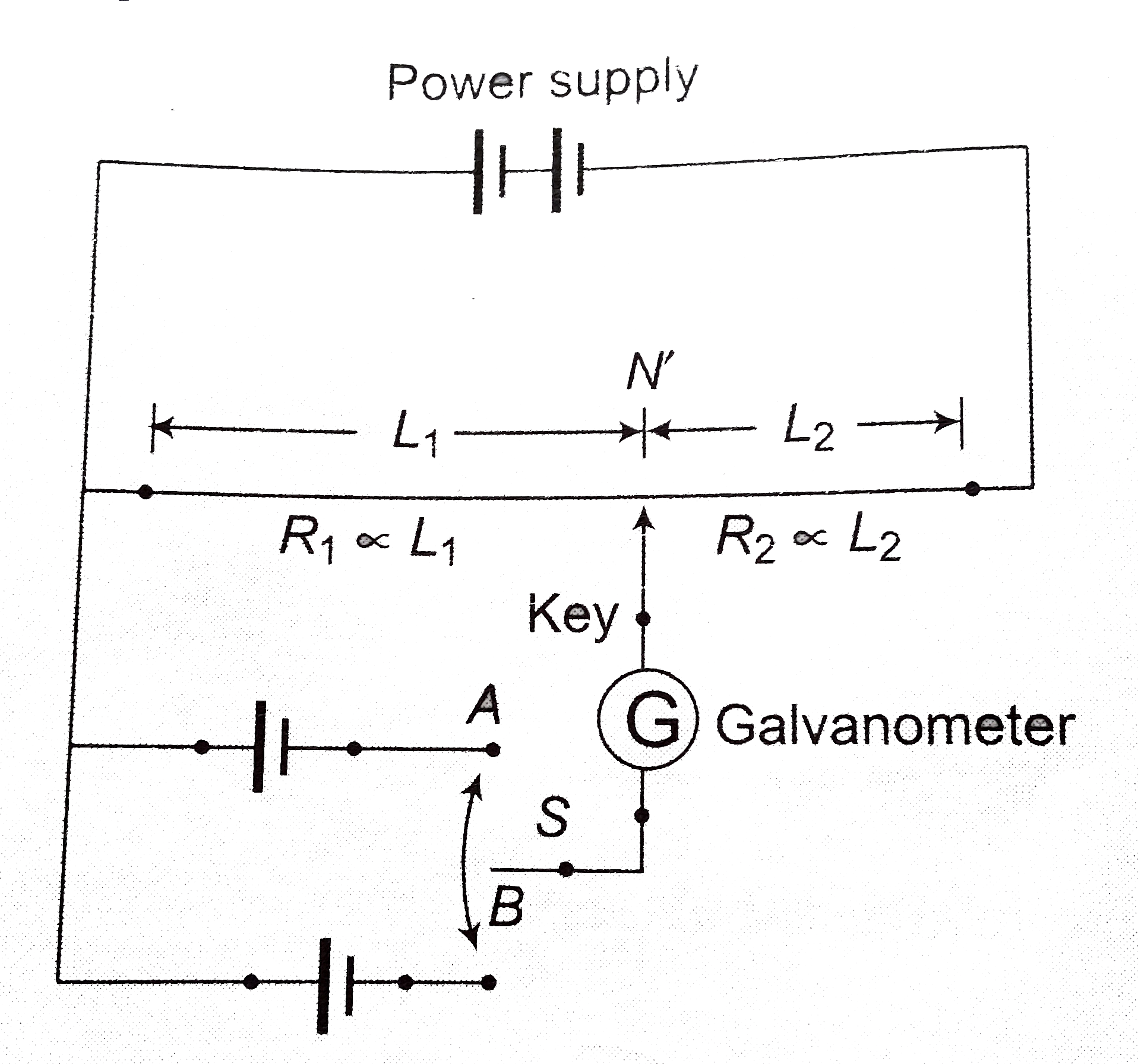
A slide-wire potentiometer is shown in the figure. In this device the resistances `R_1` and `R_2` of figure are actually a uniform wire `1.000 m` in length. Hence, the resistance `R_1` is alphaortional to length `L_1` and the resistance `R_2` is alphaortional to the length `L_2`. the galvanometer junction `N'` in the figure is sharp-edged key that can slide along the wire and be made to make contact with ot at any position along its length. When a standard cell with an emf of `1.6 V` is used and the switch `S` is in position `A`, the length `L_1` is `40 cm` for no current to flow through the galvanometer. When the switch is moved to position `B`, the length `L_1` must be changed to `60 cm` for tge galvanometer to carry no current. What is the value of the emf `E_2` ?03:12View SolutionWhen a certain potentiometer is used to measure an unknown emf, the standard emf has a value of `1.2076 V`. When the standard emf is in the circuit and resistances `R_1` and `R_2` are adjusted so that no current flows through the galvanometer, the values of `R_1` and `R_2` are `2.42 Omega` and `4.84 Omega`, respectively. When the unknown emf is in the circuit, the value of `R_2` is `3.66 Omega`. What is the value of the unknown emf ?
03:34View SolutionConsider the potentiometer circuit for determining the internal resistance of a cell. When switch `S` is open, the balance point is found to be at `75 cm` os the wire. When switch `S` is closed and value of `R` is `4 Omega`, the balance points shifts to `60 cm`. find the internal resistance of cell.
 .02:01View Solution
.02:01View Solution
A constant voltage `V_0` is applied to a potentiometer of resistance `R` connected to an ammeter. A constant resistor `r` is connected to the sliding contact of the potentiometer and the fixed end of the potentiometer. How will the reading of ammeter vary as the sliding contact is moved from one end of the potentiometer to the other ? The resistance of ammeter is assumed to be negligible.05:41View SolutionA `600 cm` long potentiometer wire is connected to the circuit. The resistance of potentiometer wire is `15 r` (a) At what distance from the point A should the jockey touch the wire to gap zero deflection in the galvanometer ? (b) If the jockey touches the wire at a distance of `560 cm` from A, what will be the current in the galvanometer ?
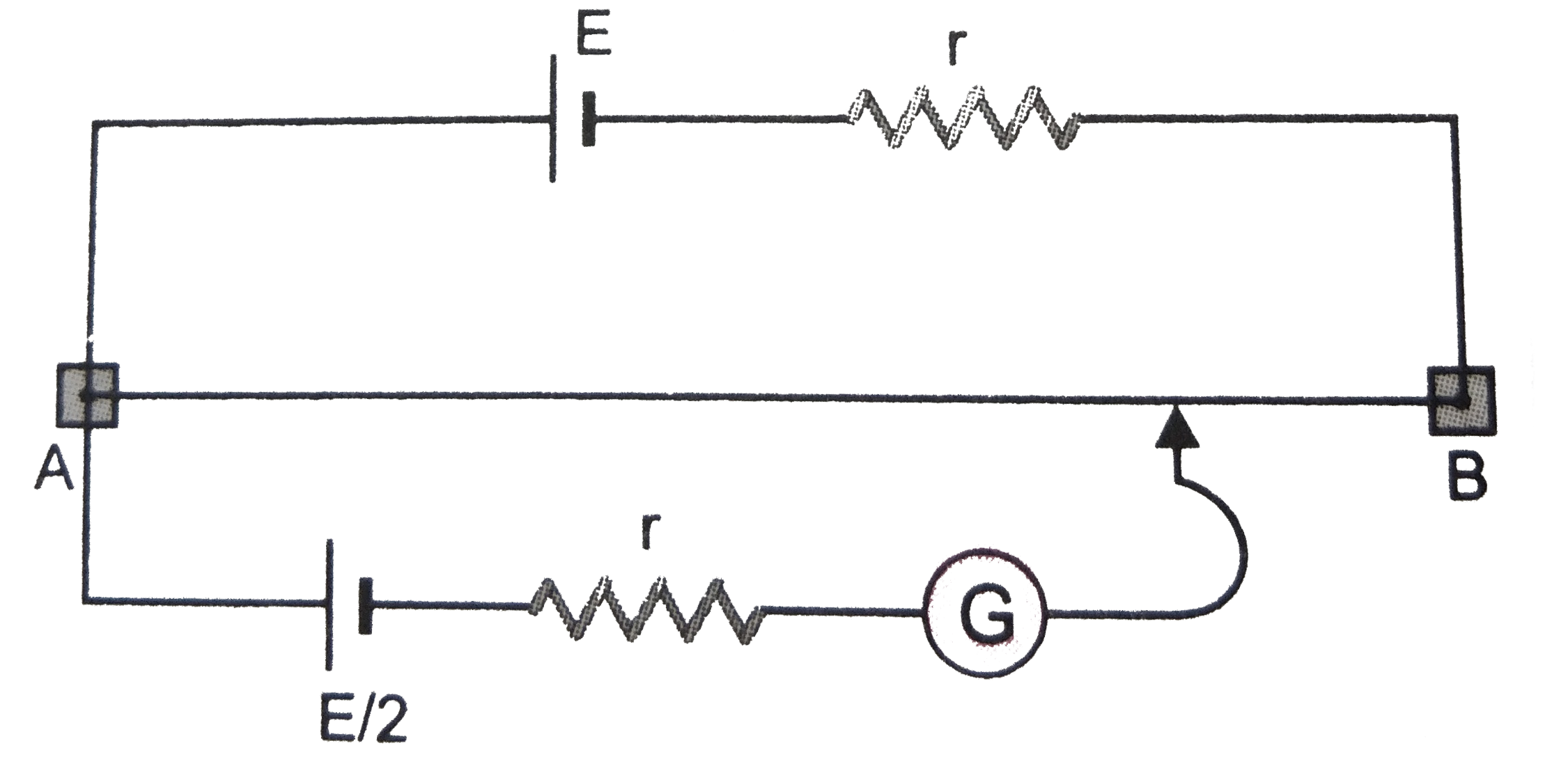 06:03View Solution
06:03View Solution
Example questions and complete solutions for chapter CURRENT ELECTRICITY of CP SINGH PHYSICS (HINGLISH) of Class 12
